7 Signs That May Point to a Child’s Special Way of Thinking
And how to create a space where they feel understood, creative, and free
Every child is unique. Yet some stand out early with a special intensity of thought — they look at the world differently, ask endless “why” and “how,” feel deeply, and spot connections others miss. These children are often called “uniquely thinking,” “creative,” “gifted,” or even “little geniuses.”
In everyday life, though, this special way of thinking doesn’t always look “easy” — it can create challenges for both children and parents. This article will help you recognize the 7 most common signs and understand how to help your child thrive, not feel misunderstood.
1. They ask a lot of questions — including the hard ones
“Why?”, “How does this work?”, “What would happen if…?”
These kids don’t stop at facts — they want to understand the essence. Sometimes it can sound like a challenge to parents or teachers, but the child is simply searching for meaning and logic.

2. One topic can take over completely
Dinosaurs, space, or ocean life — a child can spend hours exploring a single subject.
They’ll dig through books, the internet, and videos. And if you say “time to stop now,” they may get upset or angry, because they feel pulled out of their exploration world.
3. They feel things deeply
These children experience emotions intensely — joy, wonder, and also injustice. They can react strongly to noise, criticism, or change, and to adults it can look like “drama.”
In truth, they’re simply experiencing the world with a wider emotional range.

4. They get bored quickly
If tasks are too easy or repetitive, a child becomes restless. They may seem “disobedient” or “dreamy,” but really their mind needs new challenges and the freedom to think for themselves.
5. “I’ll do it myself”
You’ll hear this often.
For these children, independence means not only being able to do something, but also having the right to choose and experiment.
Sometimes that means a messy room or refusing help — they’re practicing autonomy.
6. They think on a grand scale
“I want to build an entire city from blocks!” or “Maybe we could invent a robot dog?”
These kids don’t stop at small ideas. They have a powerful creative imagination and strategic thinking that can exceed their age.
7. They have their own kind of order — and they defend it
Their room might look messy to you, but they know exactly where everything is.
If someone rearranges their things, they can get upset — because their inner structure matters.
This “creative chaos” is often a personal working system only they understand.

How to create an environment where a little genius can grow
When a child thinks and feels differently, the key for parents is not to control, but to collaborate with their mind and interests.
A space where the child feels free, safe, and engaged helps them develop both creativity and confidence.
Here are practical ideas for helping such a child thrive — and how Kidspace solutions can support daily life.
1. Give ideas a place to live and grow
Children with a strong spark for thinking need a spot to visualize ideas, build, write, or experiment.
The Luula Table with a 3D world in the table’s center lets a child develop creativity — the acrylic board surface works as a writing area and as a space for letters, early math, and play (sand, water, magnets).
The result is engaging activity for kids and a free moment for parents.

2. Support their interests
If a child is passionate about one topic, let them go deeper.
Kidspace’s Luula rolling shelf “Berta” helps children store and move their books, projects, or collections — exactly where their exploration is happening.
This teaches them to organize thoughts and space, instead of suppressing curiosity.

3. Create a calm corner
Uniquely thinking kids need a place to switch off from overstimulation.
Wigiwama poufs and sofas help you set up a reading or quiet nook — where a child can spend time with a book or simply restore balance.

4. Encourage independence and order
Independence matters, but it doesn’t have to mean chaos.
Kidspace offers functional storage solutions that double as play — for example, stationary units that can work as a dollhouse, garage, or activity scene, and toy boxes/bookshelves on wheels that children can move by themselves and adapt to their play.
5. Add movement for expression
Gifted thinkers can’t always “sit still” — body and mind are closely linked.
Kidspace includes Pikler-inspired climbers, foam play blocks, swings, and rocker arches that let children turn ideas into movement and build confidence through physical experience — even together with moms and dads.

6. Collaborate — don’t compete
Let your child teach you — their curiosity is a gift, not a threat.
Ask questions, research together, create joint projects.
A child who feels their thoughts are respected grows more confident and more empathetic.
In closing
Uniquely thinking children are often the ones who go on to change the world. They simply need someone to believe in their view and help them find balance between freedom and structure.
Kidspace.store offers exactly this kind of environment — where a child can think, create, and be independent, and parents can feel calm and inspired.
Drawing supplies or a dinosaur collection — always right where they’re needed most.
Visit kidspace.store — get inspired and create a space that grows with your child. 🌈
Kids’ Room 2025/2026: Colors, Layout & “Smart” Solutions
The last few months have brought a clear direction for children’s spaces: a calm base, bold (but measured) accents, layered lighting, toy rotation, and safer materials. Here’s what’s changing and what to keep in mind — with comments echoed by globally recognized designers.
1) Colors: calm base + confident accents
What’s happening: In 2025 interiors we’re seeing a comeback of primary colors — red/yellow/blue used in small, clear doses (locker fronts, soft-play modules, a niche), not full walls. Pinterest’s “Primary Play” nails it and broader interiors media back it up: Pinterest, Better Homes & Gardens.
For depth on a single plane (a niche or ceiling), introduce a deep blue-violet zone — “Future Dusk,” the WGSN/Coloro Color of the Year 2025. WGSN
A few Kidspace.Store examples (colorful, movable accents):
-
MUSTARD MADE “The Shorty” — a colorful metal locker (13 shades). It delivers those primary pops in furniture, not paint.
WIGIWAMA “Settee” modular kids’ sofa (e.g., Matcha/Guava/Brown Sugar): a soft, safe accent kids can rebuild.
Wallpaper as an accent (not the base): if you want a soft graphic “rhythm” in one area, pick one wall or niche (stripes, dots, botanicals) in a matte finish. That way you can swap the accent as your child grows — without repainting the whole room.
2) Layout: micro-zones that differ, yet play nicely together
Principles: child-scale access with low, open storage and visible choices (Montessori basics) plus tactile/sensory and movement prompts. Aim for 4–5 micro-zones: climbing, pretend play, quiet reading/nest, maker/sensory table, open movement space. Inspiration: AD Middle East.
Wallpaper for zoning (this is where it shines):
Wrap one wall behind the maker table or reading nook with a gentle, matte pattern — it creates a stylish focal point without overloading.
Kidspace.Store picks:
-
STUDIO PIENI (soft patterns, FSC, easy to remove) — Olivia / Regina / June / Isa / Liz — perfect for a single zone
For rentals / quick theme swaps: DECOCHIC peel-and-stick (e.g., cactus motif)
Kidspace zoning examples:
-
Movement: LUULA “Nabu” (foldable Pikler triangle + activity tabletop) — function changes easily so it never gets boring; compact and grows with the child.
-
Quiet corner / nest: WIGIWAMA Terrazzo Marble Moon Chair — a folding lounge seat you can flip into a reading nook.
Pretend play + order: pick your child’s favorite theme — shop, kitchen, puppet theater, garage/workshop — and park low, open shelves and baskets next to it for rotation:


3) Toy rotation (less = better play)
A study with 36 toddlers compared rooms with 4 vs 16 toys: with 4 toys, play was longer, more varied, and more creative. So keep 4–8 out at a time and swap every 1–2 weeks:
PubMed · PDF
Kidspace helpers for rotation:
BLOOMINGVILLE “Nell” cabinet — closed storage in a cheerful color (visually calmer room while keeping the fun accent):

-
OYOY / Bloomingville baskets — bundle today’s set now (choose zones, colors, and matching gear).

4) Materials & finishes: low/zero-VOC, easy-care
For kids’ zones, parents are (rightly) choosing low-emission paints and materials. Look for EU Ecolabel finishes (interiors) and GREENGUARD Gold for furniture/surfaces (tougher emissions standard for sensitive groups):
Background reading: · EU Ecolabel · JRC Product Bureau · UL GREENGUARD
Kidspace.Store to make life easier:
Lorena Canals washable rugs — toss in the washing machine; ideal for toddler life and visual zoning.

-
Wallpaper for zones: DEKORNIK or STUDIO PIENI (FSC, water-based inks, paste-the-wall, easy removal) — safe and practical for accents.

5) Lighting: layered and adjustable (day vs night)
Play needs energy, bedtime needs a ramp-down. In practice: ambient (ceiling) + task (table/reading) + accent (niches, fairy lights). If possible, choose tunable white (adjustable color temperature): cooler for daytime focus, warmer for evening wind-down. Tips: ArchDaily ·
Ambient (general): even warm-gold light across the room.
Target: 150–250 lx on the floor.
Solutions: flush/semi-flush with matte diffuser, or a track with 2–3 adjustable spots.-
Task / “learning” zone (desk): stronger, focused light.
Target: 500 lx on the desktop.
Solutions: LED desk lamp CRI ≥90, 3000–4000 K, adjustable arm, anti-glare diffuser.

-
Play zone: wide, non-glare light so colors look true.
Target: 300 lx at floor level.
Solutions: low floor lamps with diffusers, up/down wall sconces, or a track with wide beams. -
Reading nook/bed: soft, directional light without glare into the eyes.
Target: 300–400 lx on the page.
Solutions: wall lamp with a switch by the bed, or a clip lamp with a narrower beam; 2700–3000 K. -
Night orientation: very low, warm light for safe movement.
Target: 1–10 lx.
Solutions: plug-in night light with motion sensor, or an LED strip under the bed. -
Accents/decor fun: let the room feel like theirs.
Solutions: shelf LED strips (matte profile), star projectors; use RGB for play but warm white for everyday.
Deep-dive on tunable white:
U.S. DOE explainer
6) Screens in the play zone? (short take)
AAP guidance: for ages 2–5, about 1 hour/day of quality content, ideally co-viewed; under 18–24 months, better to avoid (video-chat is the exception). So the playroom doesn’t need a TV — better to cue movement/imagination.
AAP policy portal · HealthyChildren.org guide
Kidspace alternative to “TV time”:
PLUSH NEST ball pit — safe big-movement play indoors (various sizes/colors):

7) Three ready-to-shop configurations (with specific picks)
A) Small living-room nook (4–6 m²)
-
Base: calm wall; bring a bold accent with MUSTARD MADE “The Shorty” (choose your child’s favorite color).
-
Quiet corner: LORENA CANALS “Vichy Rose” pouf.
Zoning: DEKORNIK and STUDIO PIENI “Regina/Isa” in one niche (wallpaper = zone marker, not the room’s main character).

B) Mid-size playroom (8–10 m²)
Movement: LUULA “Sleeper” (transformable climbing + rocker set).
Toy storage — mobile, on wheels, multi-purpose, also for books: “Berta” Montessori bookshelf/toy box + baskets.
-
Toddler table: ODEAS set.
Zoning with an accent wallpaper at the maker wall: DECORNIC (stripes = rhythm).

C) Big “workshop” (12+ m²)
-
Movement & nest: LUULA Pikler triangle set with Hilltown rocker arch, WIGIWAMA Settee + MOONIO ball pits — later you can swap in a learning zone and separate areas with color families.
-
Learning & creative activities: LUULA adjustable table from age 2, multifunctional for crafts.
-
Theme décor (child’s favorite): wall décor or shelves.
-
Bed & sleep zone gear.

Quick checklist
-
Toy rotation — keep 4–8 toys out; swap every 1–2 weeks. (PubMed)
-
Layered lighting + tunable white if possible. (Energy.gov)
-
No TV in the play zone (AAP: quality over quantity; under 2 years — minimal). (AAP portal)
Further reading — healthy-choice basics
-
EU Ecolabel for interior paints; GREENGUARD Gold for low emissions and healthier kids’ spaces:
EU environment portal · JRC Product Bureau · UL Solutions -
Tunable white (DOE explainer):
https://www.energy.gov/eere/ssl/understanding-led-color-tunable-products -
AAP on screens for ages 2–5 (policy + parent resource):
https://www.healthychildren.org/English/family-life/Media/Pages/healthy-digital-media-use-habits-for-babies-toddlers-preschoolers.aspx
If you’d like advice from a German Design Award–winning designer, just send your questions to [email protected] — we guarantee a reply! Add “DESIGN & FUNCTIONALITY” in the email subject. Offer valid only until 30 September 2025.
A Safe Connection = A Smarter, More Capable Child
What does the latest science say, and how can we help our children truly thrive?
Have you ever wondered why some children seem to absorb everything around them — learning quickly, remembering details, and using them in the right moment…
While others hold tightly to their parent, seemingly uninterested in what's happening beyond that connection?
How does your little one experience the world?
Why do they respond the way they do?
Is it simply their temperament — or is it something we, as parents and caregivers, can influence and nurture?
Many of us grew up hearing phrases like:
🗣️ “Don’t carry the baby too much — you’ll spoil them.”
🗣️ “Let them cry — it builds character.”
🗣️ “They should learn to play on their own.”

So… what’s the truth?
Are today’s children truly more “spoiled”?
Or do they simply need something different to blossom?
You’re not alone in these questions.
And the good news is — we now have clearer answers.
Not just from experience or tradition, but from science — a deeper understanding of how children grow, learn, and form relationships with the world.
🌟 Why shared moments are more than just “quality time”
As parents, we’re constantly trying to “get it right.”
But between expert opinions, social media tips, and well-meaning advice from others — it’s easy to feel confused.
One voice says, “Let them be free.” Another says, “Structure everything.”
So what should we believe?

Spending calm, predictable time together with your child is one of the most powerful ways to support their brain development.
🧠 New scientific insight: Children’s brains grow in safe relationships
The study revealed that children who experience predictable, emotionally secure moments with a caregiver — even simple, repeated interactions — develop significantly better learning abilities.
And no, we’re not talking about strict schedules.
We’re talking about rhythms your child can rely on:
✨ “Every day after lunch, we sit and draw together.”
✨ “Each night, we read a story before bed.”
✨ “After school, we prepare a snack together.”

❓What does this mean for you as a parent?
We hear these questions all the time:
“Do I really have to play with my child every day?”
“Shouldn’t they learn to be independent?”
“Is it too much if I’m always present?”
The answer isn’t black and white.
But what we now know is this:
Quality time isn’t a bonus — it’s the foundation for independence, resilience, and curiosity.
When your child feels safe, seen, and heard, their brain becomes ready to engage, learn, and explore the world around them.
🌿 At Kidspace, we help make those shared moments natural
Our mission at www.kidspace.store/shop isn’t just to sell toys — it’s to help you create an environment where your child can grow into themselves, and where you can feel calm and connected as a parent.
From wooden climbers and rocking horses, to pretend play houses, board games, and outdoor play gear, every product is selected with a purpose:
➡️ To support real-life connection — where children feel important, and adults feel genuinely involved.
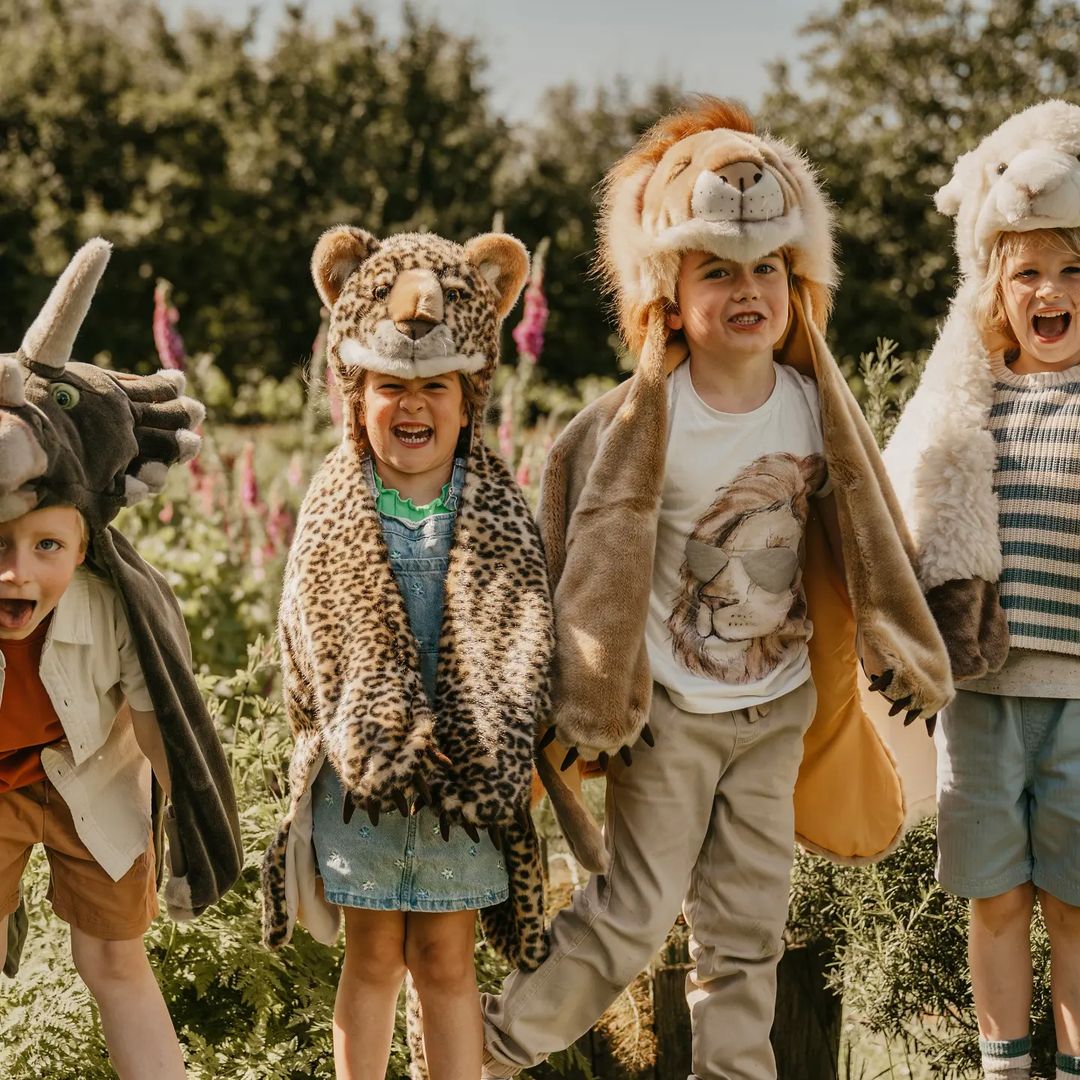
🎯 Let’s shift our mindset — from “leave them be” to “be here, calmly”
The old belief that children must entertain themselves to learn independence is being replaced by a more respectful approach: presence leads to confidence.
👶 The more connection your child experiences, the more secure and self-reliant they become.
👧 The more they are invited into shared play, the more they develop imagination, language, and problem-solving.
We hear this echoed in everyday parent stories:
💬 “I was worried Emily would become too clingy,” shares Kristīne, a mom from Liepāja. “But since we created her own cozy corner with a play kitchen and wooden house, she’s blossomed. She starts the game and invites me in — with joy!”
🧩 What can you do — starting today?
✔️ Create one shared play moment each day
✔️ Choose toys that encourage imagination, creativity, and teamwork
✔️ Give your child space to explore, but let your presence be their foundation
✔️ Browse our specially curated pieces for mindful play:
👉 www.kidspace.store/shop
❤️ Kidspace – where play becomes the foundation for lifelong learning
We believe that the richest learning happens in homes filled with closeness, rhythm, and joy.
And that every shared moment helps build a child’s ability to trust, learn, and explore their world confidently.
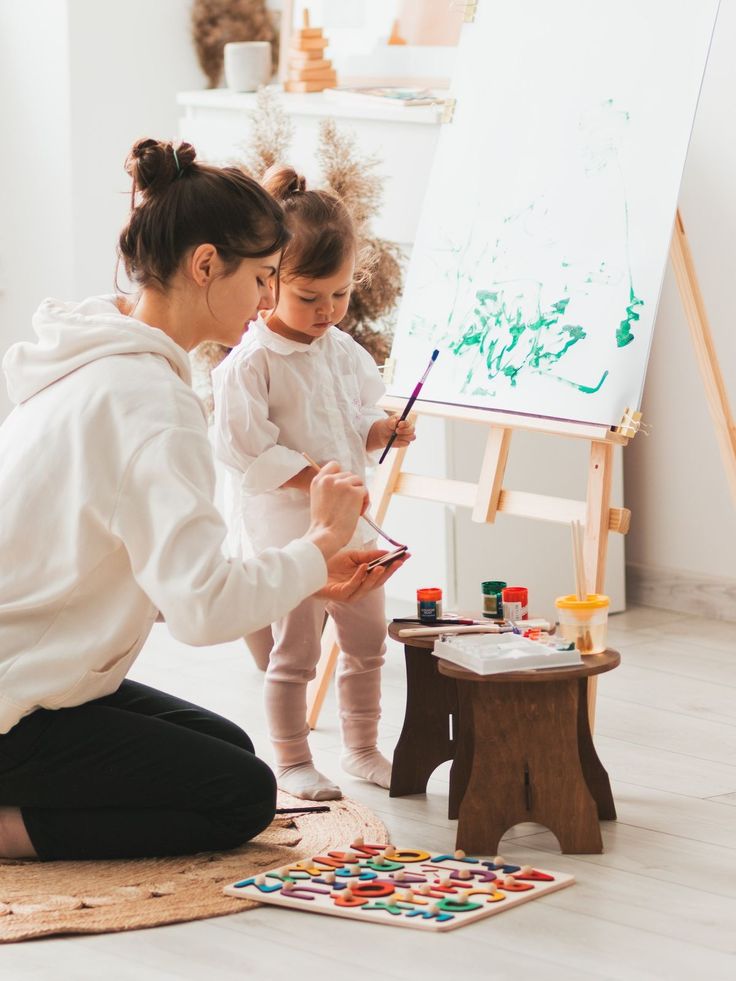
✨ Build stories, towers, and memories.
✨ Let your child grow in a space where they feel truly safe — with you, right there.
📦 Visit our store and start creating your family rhythm today:
👉 www.kidspace.store/shop
How Colorful Bells Spark Early Love for Music, Learning & Creativity in Children
There’s something magical about the first time a child creates a sound on their own. It’s a spark — a moment where curiosity meets creativity. The colorful hand bell set from SENSE PLAY isn’t just a toy — it’s a powerful learning tool that supports your child’s brain, emotional, and sensory development.

🎵 See the bells here:
👉 SENSE PLAY Colorful Hand Bell Set – 8 tones from Do to Do
When Should Children Be Introduced to Music?
Experts recommend starting music-related activities from as early as 12–18 months, as this is when the brain is rapidly forming new connections. Simple, safe instruments like these bells are ideal for little hands and curious minds. By age 2–3, children are fully ready to explore sound, color, rhythm, and sequence in creative ways.
What Makes This Bell Set So Special?
This 8-bell set is perfectly tuned from Do to high Do (C to C). Each note is represented by a bright, bold color:
🎵 Do – Red
🎵 Re – Orange
🎵 Mi – Yellow
🎵 Fa – Green
🎵 Sol – Light Blue
🎵 La – Blue
🎵 Ti – Purple
🎵 High Do – White (usually red II)

The color-sound pairing makes it easier for children to connect tone and color visually, which supports early musical recognition and sensory integration.
The Science: How Music Boosts Brain Development
Playing and listening to music activates both hemispheres of the brain — an experience few other activities offer. Early music play:
-
Improves memory and focus
-
Strengthens auditory discrimination (key for language development)
-
Enhances fine motor coordination and timing
-
Boosts emotional regulation and creativity
-
Encourages multi-sensory processing, especially when paired with color and movement
Real-Life Ways to Use the Bells

These bells aren't just for music — they're a versatile tool for learning and fun:
🎨 Sensory play – Combine sound, color, and motion
📚 Storytime – Use bells as sound effects in interactive tales
🎶 Early music lessons – Practice simple scales, rhythm, and repetition
🗣 Speech & language development – Match bells to words, syllables, or expressions
👧👦 Group play – Perfect for preschool or therapy environments

🔔 Game Idea: “Bell Hunt”
-
Hide the bells around the room.
-
Call out a color or note (e.g., “Yellow!” or “Mi!”).
-
Your child must find the correct bell and play it.
-
Add complexity by giving sequences like “Do–Re–Mi” to remember and play.
This activity strengthens memory, attention span, movement coordination, and active listening — all in a joyful, energetic way.
📖 Sensory Story Idea: “The Rainbow Adventure”
Create a story where each color (and sound) represents a feeling or moment:
-
Red (Do) – Joyful sunshine in the morning
-
Green (Fa) – Calm forest breeze
-
Purple (Ti) – Dreamy starlit night
-
White (High Do) – Magic at the end of the rainbow
As you tell the story, have your child ring the matching bell when that color or feeling appears. It becomes a fully immersive sensory experience, helping with emotional expression, language, and memory.
Why This Toy Supports Lifelong Learning
Through hands-on play with bells, your child builds a foundation for future learning. They develop:
-
Early musical awareness
-
Cognitive skills like pattern recognition
-
Confidence in self-expression
-
A natural, joyful relationship with sound and rhythm
Final Thoughts: Music Begins with a Single Ring

With just one bell, a child discovers more than a sound — they discover the ability to create, to feel, to express. The SENSE PLAY colorful bell set invites children to learn through joy, to develop through movement, and to connect with music in the most natural way.
🎵 Bring this magical set into your home or classroom today:
👉 Buy the SENSE PLAY Bell Set here
Which Parenting Style Are You? Find Out How It Shapes Your Child’s Room (And How to Make It Better!)
Are you an authoritarian parent, a permissive parent, or someone striving for a balance between these approaches? This article will guide you in evaluating your parenting style and exploring how your choices for children’s furniture and decor can align with—or evolve toward—the parenting style you aspire to.
Why Your Parenting Style Matters in Interior Design

Your child’s room isn’t just a space—it’s their world. The way you design this environment mirrors your values, priorities, and how you want your child to grow. From eco-friendly furniture choices to playful, imagination-boosting setups, every decision you make shapes your child’s development and well-being.
Moreover, the right decor and furniture can also support the parenting style you aim for. A well-structured, visually appealing, and functional room can help foster creativity, independence, and a sense of security in your child. At Kidspace.store, we offer a curated range of kids’ furniture and decor ideas designed to meet these goals.
Parenting Styles and Their Interior Design Reflections
1. Authoritarian Style: Structure Above All

Characteristics: Authoritarian parents value discipline and order, often focusing on rules and obedience.
Interior Choices:
Minimalist and functional spaces with neutral or cool color schemes.
Limited decorations and carefully organized furniture.
Practical designs, discouraging excessive creativity or "messiness."
What It Reflects: These parents prioritize control and order, but the environment may feel too rigid, limiting the child’s ability to express themselves freely.
2. Permissive Style: Anything Goes

Characteristics: Permissive parents want to make their child happy, often by avoiding conflicts and saying "yes" to their child’s every wish.
Interior Choices:
Vibrant, playful decor featuring colorful furniture and an abundance of toys.
A less structured layout with an eclectic mix of styles.
Flexible, ever-changing designs catering to a child’s immediate desires.
What It Reflects: This style fosters creativity and individuality but may lead to clutter and a lack of routine.
3. Overprotective Style: Shielding Every Step

Characteristics: Overprotective parents aim to provide maximum safety and comfort, often at the expense of fostering independence.
Interior Choices:
Overemphasis on soft materials, rounded edges, and "safety-first" designs.
Furniture and decor reflect the parents’ aesthetic preferences rather than the child’s developmental needs.
A "perfectly curated" but less functional room for independent play.
What It Reflects: While this style creates a safe haven, it may inhibit a child’s ability to take risks and grow independently.
4. Neglectful Style: The Absent Approach

Characteristics: Neglectful parents provide little guidance or involvement in their child’s life and development.
Interior Choices:
Sparse or poorly planned rooms with little attention to functionality or aesthetics.
A lack of toys, decor, or furniture that supports development.
Environments that feel uninviting and disconnected from the child’s needs.
What It Reflects: This style may lead to feelings of neglect and isolation in the child, hindering their sense of security and creativity. An uninspired space does little to support emotional or intellectual growth.
5. Balanced or Intentional Style: The Sweet Spot

Characteristics: Balanced parents aim for a middle ground, blending guidance and freedom to nurture both creativity and discipline.
Interior Choices:
Montessori-inspired furniture, such as adjustable shelves, activity tables, and learning towers.
Neutral tones combined with pops of color to stimulate creativity.
Eco-friendly materials and thoughtful designs that encourage exploration and independence.
What It Reflects: This style is ideal for fostering a well-rounded, confident, and creative child. It strikes the perfect balance between structure and self-expression.
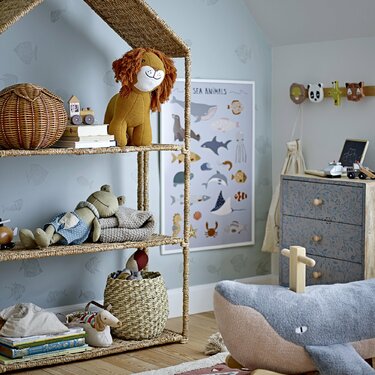
How to Choose the Right Furniture and Decor for Your Parenting Style
At Kidspace.store, we believe every child deserves a space that inspires them to grow, learn, and play. Here’s how to find the perfect match for your parenting style:
For Authoritarian Parents: Opt for multifunctional furniture like storage beds and modular shelving, which keep the room tidy without sacrificing style.
For Permissive Parents: Add playful elements like Waldorf dolls, sensorial toys, or whimsical decor to create an inviting and stimulating atmosphere.
For Overprotective Parents: Choose durable, eco-friendly designs that balance safety with functionality, such as kitchen helpers or rocking arches.
For Neglectful Parents: Begin with foundational pieces like comfortable beds and functional desks, then gradually add thoughtful touches that show care and investment in the child’s growth.
For Balanced Parents: Explore Montessori-style furniture, like Pikler triangles or adjustable tables, which support independence while keeping the room organized.
Ready to Redefine Your Parenting Style?
Your child’s room is a canvas that reflects your values as a parent. Whether you want to create a safe haven, inspire creativity, or foster independence, Kidspace.store is here to help. Explore our thoughtfully designed, eco-conscious collection of kids’ furniture and decor to create a space that truly grows with your child.
👉 Shop now at Kidspace.store and start designing a room that’s as unique as your parenting style!
Handmade Dolls That Inspire: Waldorf Role-Playing Dolls and Child Development
What is Waldorf Education and Why is it Important?
Toys are not just objects – they are powerful tools that influence a child’s emotional, cognitive, and social development. Waldorf education is based on the belief that a child’s growth is deeply connected to free imagination and creativity. Waldorf toys are simple and natural, allowing children to create their own worlds. LULLU dolls, with their aesthetic, simple, and natural design, align with these principles, helping children express emotions and develop social skills.
The Psychological Perspective: Why Are Role-Playing Games Important?
Understanding the World Around Them:
Dolls help children replay real-life situations, explore their emotions, and understand the behavior of others.

Developing Social Skills:
Children learn to interact with others, solve problems, and understand different roles in society.
Fostering Empathy:
Children build an emotional connection with their doll, enhancing their ability to care for others.
The Unique Features of LULLU Dolls
- Interchangeable Clothing and Articulated Limbs: Help develop fine motor skills and allow children to freely shape their doll’s movements.
- Natural Materials and Minimalist Design: Encourage sensory perception and enable children to focus on the creative process rather than unnecessary details.
- Personalization: The doll can be given a name chosen by the child, strengthening the emotional bond and creating a unique sense of belonging.
How Do LULLU Dolls Support Different Stages of Child Development?
Early Childhood (3–6 years):
At this stage, children explore their first role-playing games. LULLU dolls provide a safe environment where children can replay everyday situations and learn social norms.

Preschool Age (6–8 years):
More complex movements, such as flexibility and posing, help children refine their motor skills. Role-playing with more elaborate stories fosters cognitive development.
Older Childhood (8+ years):
LULLU collectible dolls with fully articulated limbs offer opportunities for more complex and symbolic play, catering to the emotional and creative needs of older children.
Psychological Benefits for Parents and Families
- Strengthening Family Bonds: Parents and children can spend quality time together during play.
- Promoting Harmony: Using dolls as an educational tool helps children understand behavioral boundaries and the consequences of their actions.
Descriptions of Available Variants*

- In General:The doll can stand on its ownThe doll is able to sit by itself (legs stiffened at its full height, but movable at the hips)

- Head:Movable, but only sideways (right-left)
- Arms:Movable only at the shoulder joint; the skeleton is not implanted in the doll's arms. The arms remain limp and hang loosely along the doll's body.

- Fingers:Joined, not moveable
*This Variant is recommended for users aged 3 and older.

- In General:The doll can stand independently . The built-in "spine" gives the possibility to shift the center of gravity, so the doll can also stand on one leg and, for example, will do the so-called "swallow". She takes much more expressive poses (e.g. looks like she is running, or kicking an object)The doll can sit on its own. Bendable knees allow the doll to sit on objects (e.g. on a shelf) in a much more attractive and believable and thus more eye-catching way

- Head:It moves not only sideways but also up and down. The doll from now on can watch the ceiling as well as her own shoes.
- Legs:The legs are bent at many angles and in many places (not only the knees, but also the pelvis and ankles) , thus allowing to "wrap" the objects on which the doll sits (for example, a rocking horse, the edge of the bed)
- Arms:Movable only at the shoulder joint; the skeleton is not implanted in the doll's hands. The arms remain limp and hang loosely along the doll's body.
- Fingers:Joined, not moveable

- In General:Fully moveable version, thanks to the use of "Motion Skeleton 2.0" version.The implemented spine version 2.0 allows the doll's center of gravity to be shifted, so it is able to straighten and bend, lunge, or thrust its hips forward.The doll can also stand on one leg and, for example, will do the so-called "swallow". It takes on much more expressive poses (e.g., it looks like it is running, or kicking an object)The doll can sit on its own. Bendable knees allow the doll to sit on objects (e.g. on a shelf) in a much more attractive and believable and thus more eye-catching way.

- Head:It moves not only sideways but also up and down. The doll from now on can watch the ceiling as well as her own shoes.

- Arms:
The applied swivel shoulder joint allows you to position the doll's hands at any height (without the risk of "arm wringing")
Flexible elements implemented along the entire length of the arm allow it to bend anywhere and at any angle.

- Hands/Fingers:Separated fingers and each of them separately bendable. Thanks to such a solution, the doll can independently hold small objects as well as (thanks to the appropriate positioning of fingers) can gesture eloquently (e.g.: gesture "OK", "Magnifique", "Hell Yeah" , points to an object.... this indecent gesture with the finger is also in the range ) :)
- Legs:The legs are bent at many angles and in many places (not only the knees, but also the pelvis and ankles) , thus allowing to "wrap" the objects on which the doll sits (for example, a rocking horse, the edge of the bed)
*This Variant is recommended for users aged 12 and older.
Why Choose LULLU Dolls?
LULLU dolls combine beauty, quality, and functionality, making them the perfect choice for parents seeking educational and developmental toys. By incorporating Waldorf education principles and modern psychological insights, LULLU dolls are more than toys – they are developmental tools that support a child’s growth and foster family harmony.
The Perfect Adjustable Learning Desk for Kids - Luula Table
As parents, we want to give our children every opportunity to thrive, especially when it comes to their education. Finding the right tools that support their development and make learning enjoyable is key. The Luula Table is the ultimate adjustable learning desk for kids, designed to provide a multifunctional, engaging, and comfortable space for young learners. With features that cater to both educational needs and creative play, the Luula Table is the perfect choice for parents looking to support their child’s success.
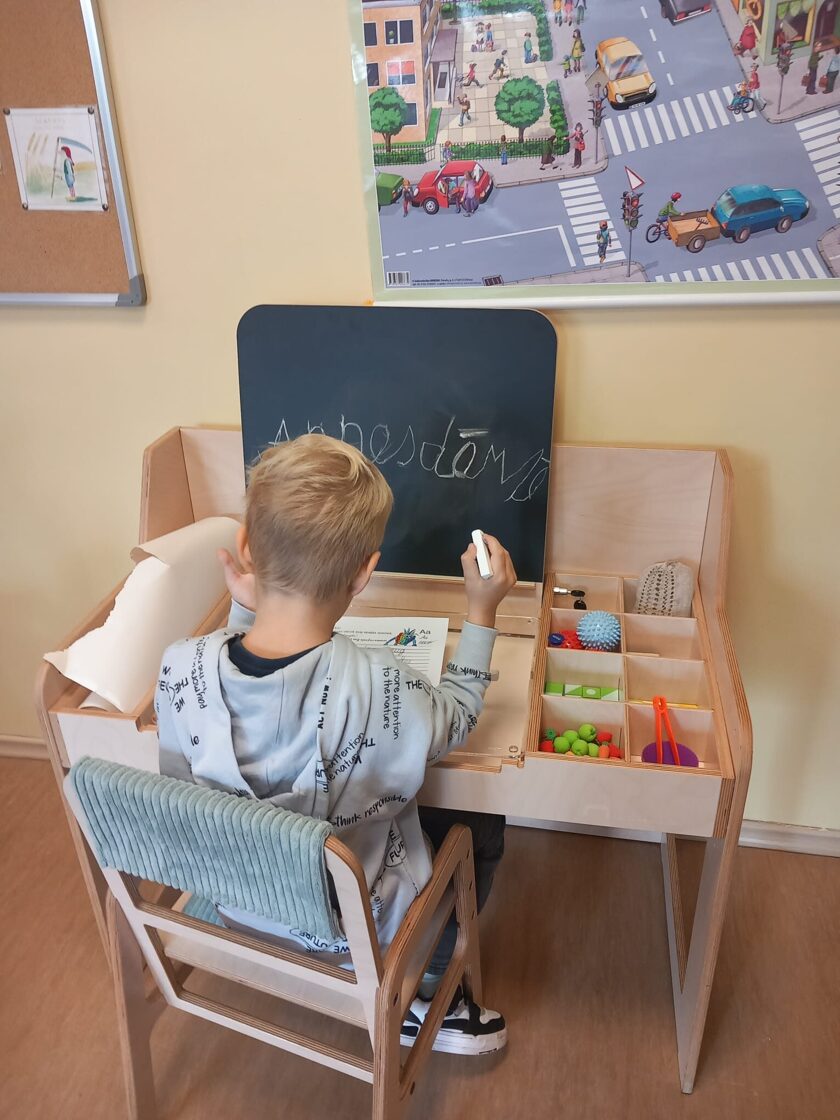
Adjustable and Kid-Friendly Design
The Luula Table grows with your child, thanks to its adjustable height feature. This ensures that it remains a comfortable and supportive workspace as your child develops. Parents love this feature because it means the table can adapt to various activities, from early drawing and coloring to more focused reading and writing as your child progresses.Compact and Space-Efficient
Designed to fit seamlessly into any room, the Luula Table is compact yet spacious, offering plenty of surface area for various activities without overwhelming your living space. It’s an excellent option for parents who want a functional desk that doesn’t take up too much room but still provides ample space for their child to work, play, and explore.Storage Space for Essentials
The Luula Table comes with practical storage compartments, perfect for keeping essential supplies like pencils, markers, paper, or even small toys within easy reach. This organized storage solution helps children stay focused on their tasks, reduces clutter, and encourages them to take responsibility for keeping their materials tidy. Parents appreciate that everything can be stored within the table, making clean-up easy and quick.Natural Materials for Creative Exploration
Made from high-quality, eco-friendly materials, the Luula Table supports DIY and hands-on learning activities. The table’s natural wooden finish provides a beautiful canvas for crafts and projects, allowing children to explore their creativity in a safe and sustainable environment. Parents who value sustainability and natural materials will find this aspect particularly appealing, as the Luula Table is built to last and made with care.Encourages Independent Learning and Play
The Luula Table isn’t just a desk; it’s a motivational tool. With its inviting design and accessible layout, the table encourages children to engage in independent activities. Whether they’re drawing, reading, or playing, the Luula Table fosters a sense of autonomy and responsibility, helping children build confidence as they explore their interests on their own.
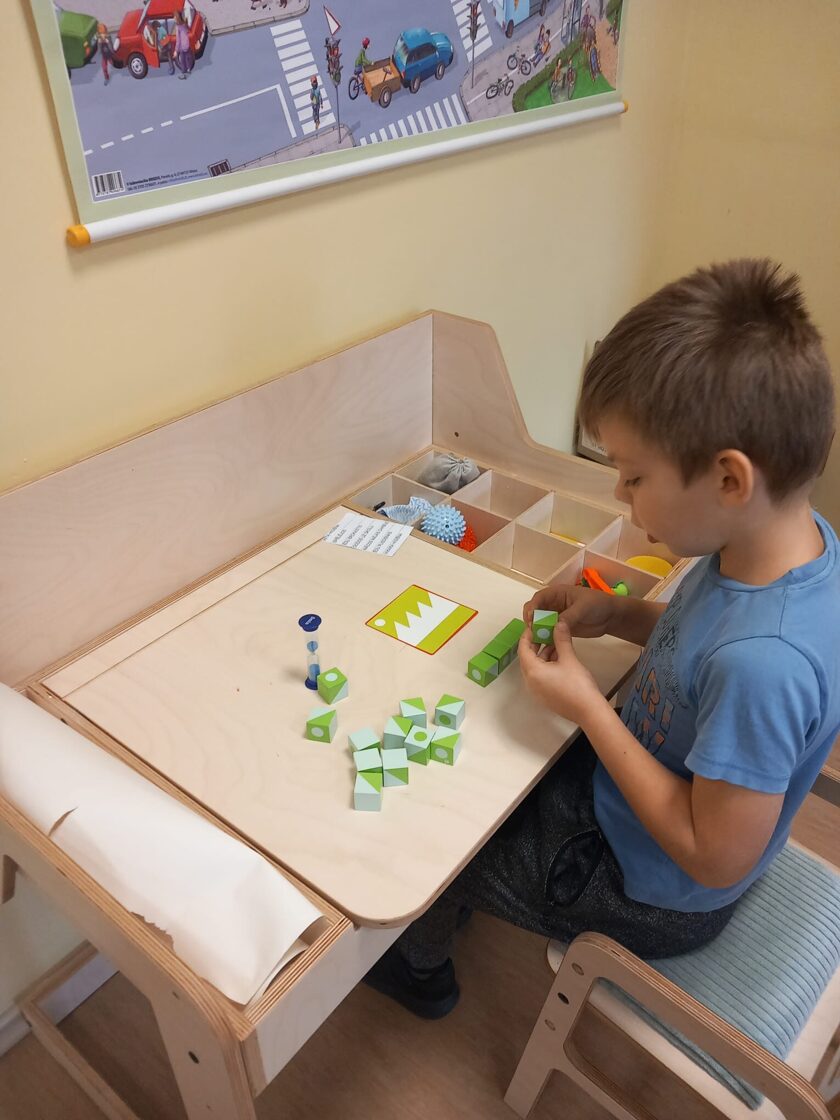
- Promotes Focus and Organization: The designated compartments help children keep their space organized, making it easier to concentrate on their activities without distractions.
- Supports Motor Skills Development: From building with blocks to practicing writing, the Luula Table’s ergonomic design supports fine motor skills and hand-eye coordination.
- Versatile for Multiple Uses: Whether your child is studying, drawing, or playing, the table’s adjustable height and functional design allow it to be used in a variety of ways.
- Made to Inspire Creativity: With its natural materials and ample workspace, the Luula Table is perfect for DIY projects, arts and crafts, and other creative pursuits.
Why Buy the Luula Table at KidSpace.Store?
KidSpace.Store is dedicated to providing quality, child-friendly furniture that supports learning and development. When you purchase the Luula Table from KidSpace.Store, you’re choosing a reliable source committed to offering products that promote a healthy, happy, and productive environment for your child.
Investing in the Luula Table is investing in your child’s future. With its adjustable, compact, and child-centered design, this desk offers a wealth of benefits that help your child thrive academically and creatively. Explore the Luula Table on KidSpace.Store today and see how this innovative desk can support your child’s journey to independent, motivated learning.
The Luula Table is more than just a desk; it’s a supportive learning environment designed to nurture your child’s curiosity, creativity, and love for learning. Visit KidSpace.Store and bring home the perfect tool for your child’s educational success.
19 Simple and Affordable DIY Halloween Decorations to Make with Kids
 Autumn is here, and Halloween is a perfect time to create unforgettable family memories by crafting simple, fun, and budget-friendly decorations! Embrace the season’s spooky spirit by turning rainy October evenings into creative and laughter-filled DIY sessions. Here are some easy, kid-friendly decoration ideas to help you transform your home into a Halloween wonderland without breaking the bank.
Autumn is here, and Halloween is a perfect time to create unforgettable family memories by crafting simple, fun, and budget-friendly decorations! Embrace the season’s spooky spirit by turning rainy October evenings into creative and laughter-filled DIY sessions. Here are some easy, kid-friendly decoration ideas to help you transform your home into a Halloween wonderland without breaking the bank.1. Toilet Paper Roll Eyes

Toilet paper roll eyes are an incredibly easy and affordable way to add some Halloween spirit to your home. Cut eye shapes out of toilet paper rolls, paint them black, and insert glow sticks inside. Place them in bushes or windows to give your home an eerie glow at night.
2. Spidery Mason Jars
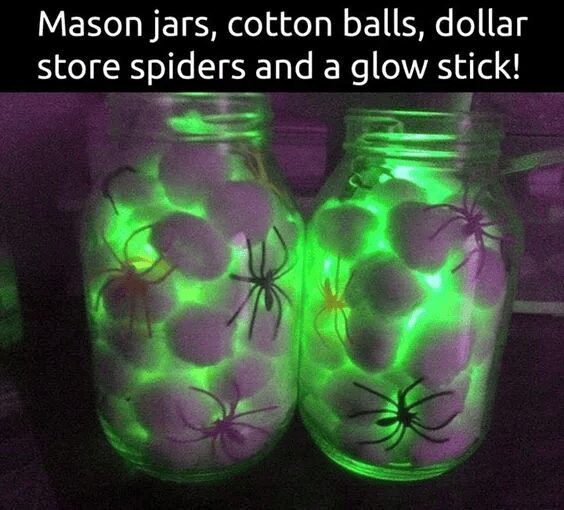
Turn ordinary mason jars into spooky decorations with a bit of paint and some plastic spiders. Paint the jars black or orange, place a tea light inside, and hot-glue some spiders around the exterior. These jars make a fantastic centerpiece or can be lined up along walkways for a haunted glow.
3. Stand-Alone Ghosts

Create adorable stand-alone ghosts using cheesecloth and balloons. Drape the cheesecloth over inflated balloons and use fabric stiffener to harden it. Once dry, remove the balloons, and you’ll have ghostly figures perfect for tabletops or windowsills.
4. Eyeball Flowers

For a creepy touch, make eyeball flowers using faux flowers and ping pong balls. Draw eyeballs on the ping pong balls with markers, glue them in the center of the flowers, and arrange them in a vase. They add a fun, spooky element to any room!
5. Spooky Cups
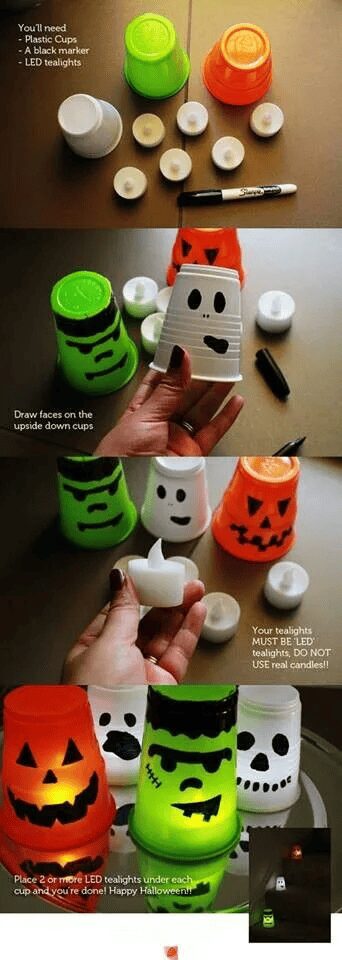
Kids will love these spooky party cups! Draw Halloween-themed faces—like pumpkins, ghosts, and monsters—on plain white or orange plastic cups. Use them for serving treats, or as a fun, quick craft to entertain kids during a Halloween party.
6. Mummy Mason Jars

Wrap mason jars in white gauze or bandages, and add googly eyes to create mummy jars. These cute and spooky containers are great for holding treats or tea lights, and they’re simple enough for even young children to make.
7. Black Cat Garland
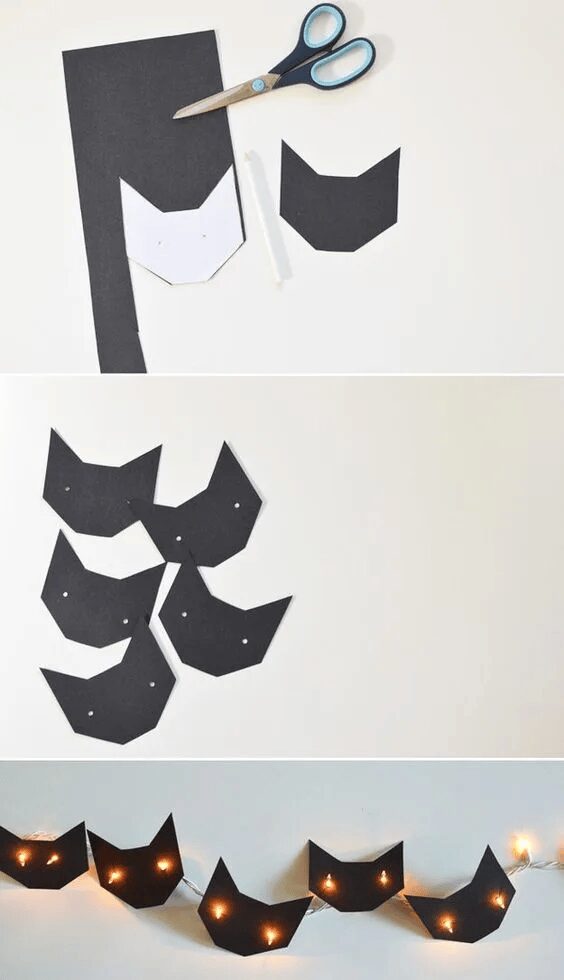
For a minimalist Halloween vibe, create a black cat garland. Cut cat shapes out of black construction paper and attach them to a string. This easy, low-cost garland can be hung along walls or stair railings to add a festive touch.
8. Monster Doors
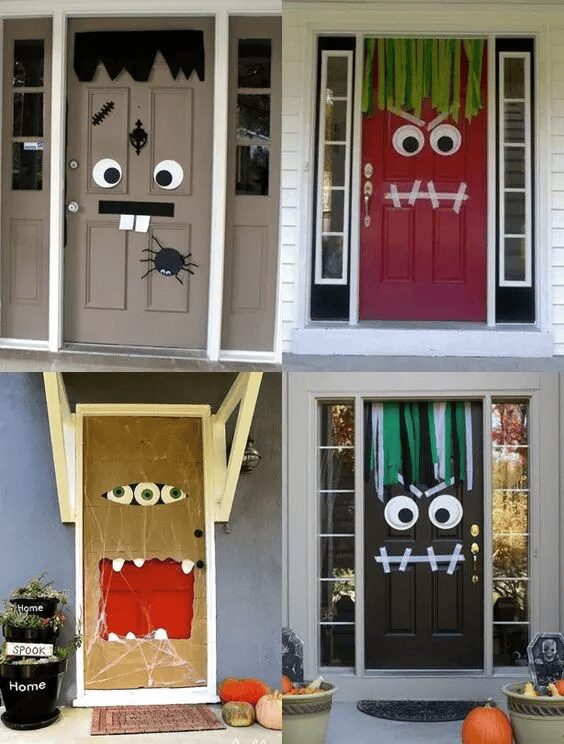
Transform any door in your home into a monster face! Use colored construction paper to cut out eyes, teeth, and horns, and tape them to the door for a fun, kid-friendly decoration. This craft is perfect for greeting trick-or-treaters or just adding a bit of fun to your home.
9. Trash Bag Spiderwebs

Make giant spiderwebs out of black trash bags. Cut the bags into strips, and arrange them in a web pattern on windows or walls. This is a quick and easy decoration that’s great for both indoors and outdoors!
10. Dried Apple Shrunken Heads

These dried apple shrunken heads are sure to add a touch of creepy to your Halloween decor. Carve faces into apples and let them dry out over a few days. Once they’re wrinkled and shrunken, you’ll have eerie, lifelike decorations that look amazing in jars or as table centerpieces.
11. Milk Carton Haunted Houses

Save your empty milk cartons and transform them into haunted houses! Paint the cartons black and cut out windows and doors. Place a small tea light inside to create a spooky glow. These mini haunted houses look great lined up on a windowsill or porch.
12. Ping Pong Eyeball Wreath
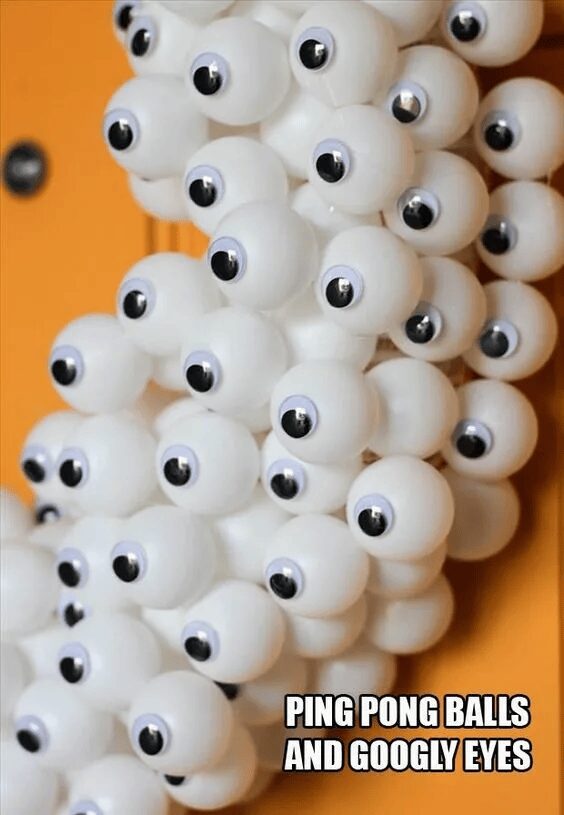
For an eye-catching decoration, create a wreath using ping pong balls decorated as eyeballs. Attach the balls to a wreath base, alternating colors and sizes for variety. This boo-tastic wreath will give your door a fun and festive Halloween look!
13. Ghostly Fridge
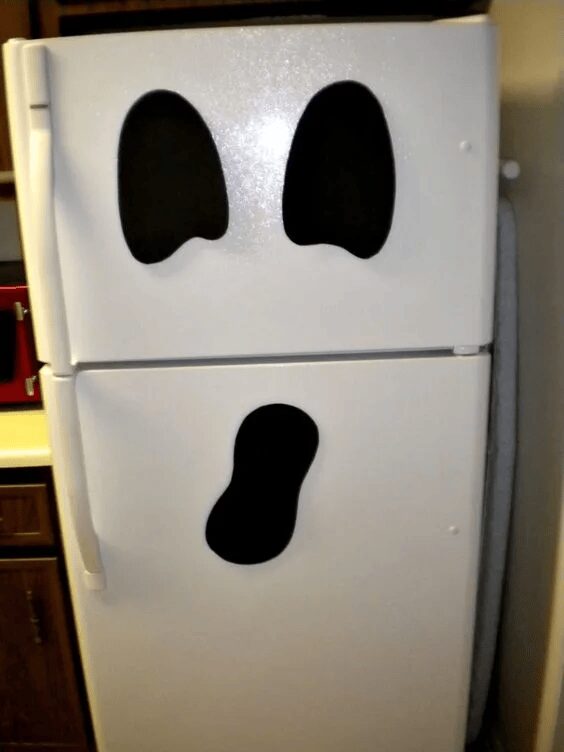
Give your fridge a spooky makeover! Cut ghostly shapes out of black and white construction paper and tape them to the fridge to create a haunting face. This is a quick and simple way to bring Halloween into your kitchen.
14. Seeing Tree

Add a creepy effect to the trees in your yard by hanging eyes made from ping pong balls. Draw or paint eyes on the balls, then use string to hang them on tree branches. At night, these “watchful” trees will add a fun scare factor to your yard!
15. Pipe Cleaner Spider
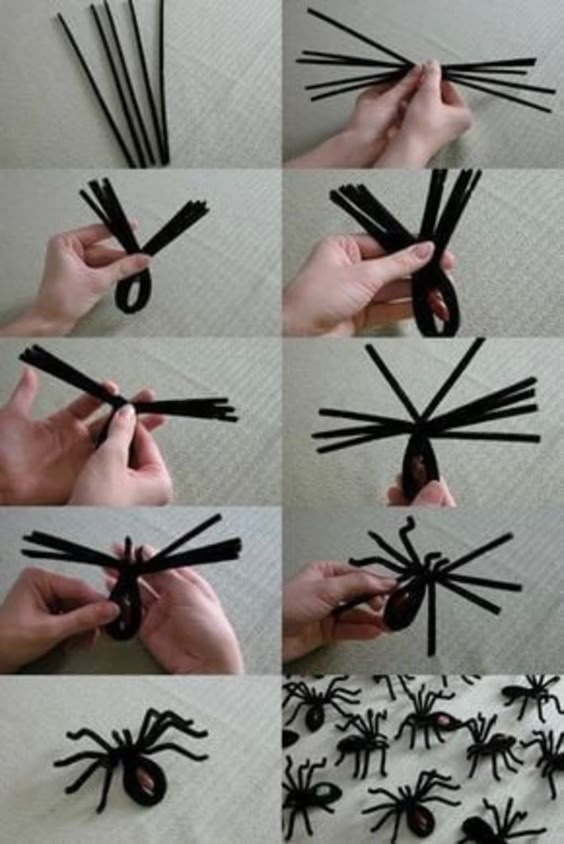
Create a fun spider friend using pipe cleaners and a foam ball. Simply attach several pipe cleaners to the foam ball to create legs, and add googly eyes for personality. These little spiders are perfect for scattering around the house or as party favors.
16. Balloon Eyeballs
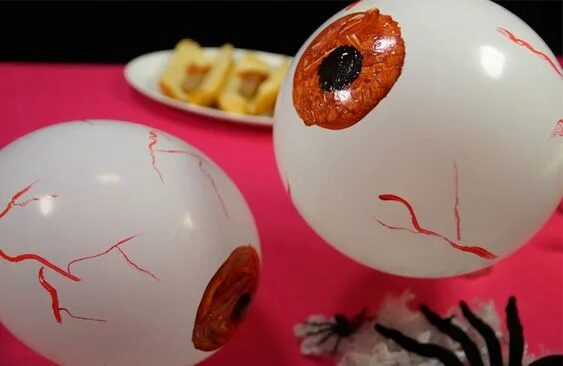
Balloon eyeballs make for a simple, impressive decoration. Draw eyes on white balloons with markers, and cluster them together as a centerpiece or hang them in windows. It’s a spooky but easy craft that adds a whimsical touch to your Halloween setup.
17. Paper Plate Ghosts
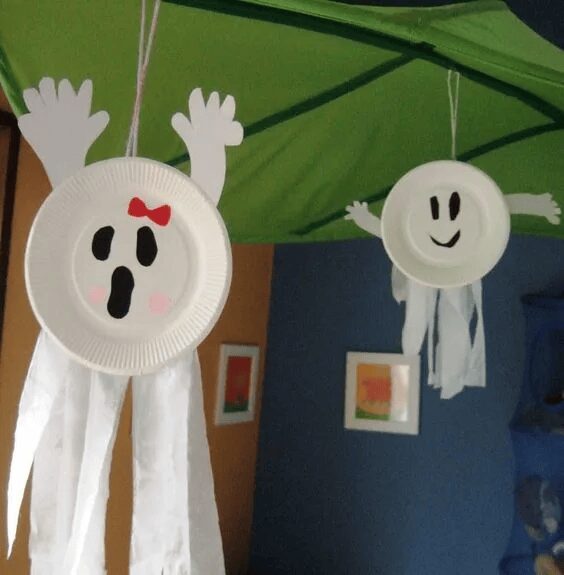
For the younger kids, paper plate ghosts are a simple and fun craft. Glue white crepe paper to the bottom of a paper plate to create a ghostly body, then draw a spooky face. These ghosts are great for hanging around the house or as fun classroom decorations.
18. Cauliflower Brains

Cauliflower makes an excellent “brain” prop! Place a whole cauliflower in a jar, cover it with water, and add a few drops of red food coloring for a creepy look. Display it on a table for a guaranteed spooky effect!
19. Pumpkin Surprise

Carve a large pumpkin with a goofy or scared expression, and place a bowl of green-colored guacamole or dip inside, spilling out slightly. This creative snack station will not only entertain your guests but also make for a fantastic table centerpiece!
Enjoy a Spooky Halloween with DIY Decor!
With these ideas, you’re ready to dive into some Halloween crafting and make this season unforgettable. Gather your kids, grab some crafting supplies, and let the spooky, silly, and fun family bonding begin. These simple, inexpensive projects not only brighten your home but also create memories that last a lifetime.
Sensor Body Sock: From Daily Stress Relief to Exciting Play
In today's fast-paced world, even young children are not immune to the pressures of modern life. Stress in children can manifest as a result of various factors, including an overwhelming school curriculum, limited time for rest, excessive homework, and, particularly in Europe, a noted lack of parental presence due to busy work schedules. Many children, as young as preschool age, are increasingly showing signs of stress and anxiety. According to several studies, the growing demands of academic life, paired with a decrease in physical activity and playtime, contribute significantly to this mental and emotional strain【source: European Child Psychology Reports】.
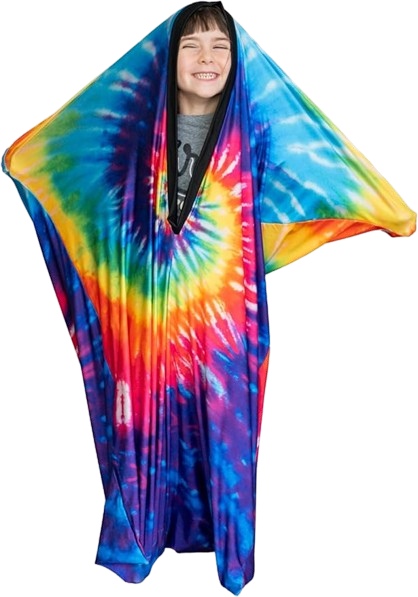
In response to these stressors, sensory tools have emerged as essential aids to help children manage their emotions and regulate their bodies. One such tool is the sensory body sock.
What Is a Sensory Body Sock?
A sensory body sock is a flexible, stretchy tool made from elastic fabric (typically a blend of nylon and spandex) that fully encloses the child's body with an opening for the head. It functions similarly to a cocoon or sleeping bag, where a child can climb inside to experience calming deep pressure input. The sensory body sock is commonly used in occupational therapy sessions to help children with sensory processing disorders, particularly those on the autism spectrum【source: American Occupational Therapy Association (AOTA)】.
According to Harkla, a reputable company that specializes in sensory products, the sensory body sock provides deep pressure, also known as proprioceptive input, which helps the child develop body awareness—understanding where their body begins and ends in space. This can significantly benefit children who struggle with sensory regulation, allowing them to maintain a calm and focused state. Harkla explains that body socks are beneficial not only for children with autism but also for those who experience general sensory processing difficulties【source: Harkla】.
Therapeutic Benefits of Sensory Body Socks
The therapeutic effects of a sensory body sock stem from its ability to provide calming pressure throughout the body, helping to promote relaxation and reduce overstimulation. It helps balance the child's tactile and proprioceptive systems by giving feedback to the nervous system. This deep pressure can have a grounding effect on children, making it easier for them to cope with stress, anxiety, or sensory overload【source: The Journal of Occupational Therapy in Pediatrics】.
The sensory body sock has multiple applications. Occupational therapists often use it during therapy sessions to improve motor planning, spatial awareness, and gross motor skills. It can also be used in play-based activities, such as pretending to be different animals, navigating obstacle courses, or practicing yoga poses. For instance, one popular activity is having the child crawl through tunnels while wearing the body sock, enhancing their sense of body position and movement【source: Sensory Integration Network】.
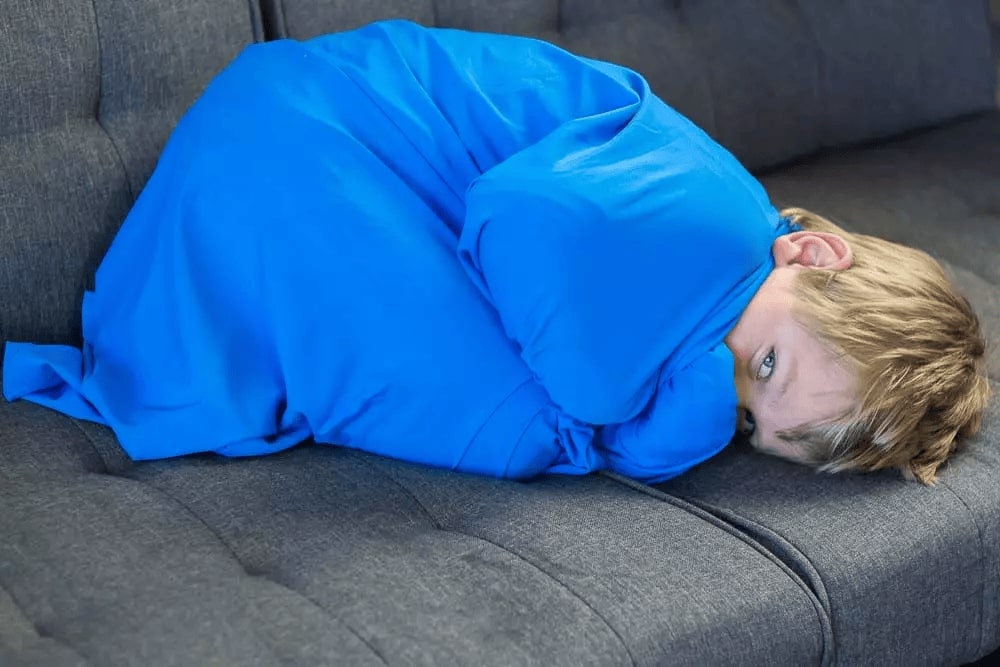
Expert Endorsements
Leading professionals in sensory integration therapy emphasize the benefits of deep pressure input. According to Dr. Lucy Jane Miller, a pioneer in sensory processing disorder research, deep pressure techniques like those provided by sensory body socks help stimulate the proprioceptive system, which can regulate arousal levels, reduce anxiety, and even improve focus. Miller notes that such tools can also aid children in improving their emotional regulation, helping them respond better to stressful situations【source: Miller, L. J. (2014). Sensational Kids: Hope and Help for Children with Sensory Processing Disorder】.
Another expert, Dr. Temple Grandin, a renowned professor and advocate for autism awareness, supports the use of sensory-based tools like body socks to calm the nervous system. Her own experiences with sensory tools have inspired numerous families and therapists to incorporate sensory equipment into daily routines【source: Grandin, T. (2013). The Autistic Brain: Thinking Across the Spectrum】.
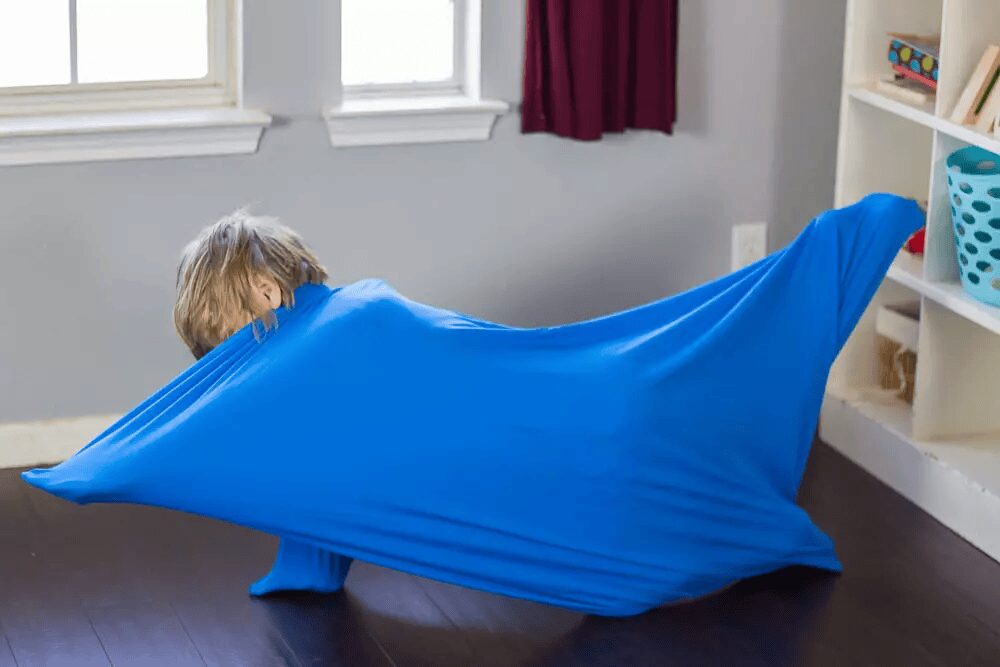
Versatility of Use
One of the most compelling aspects of the sensory body sock is its versatility. Not only is it used in clinical settings, but it is also popular in home environments for therapeutic play. The flexibility of the fabric allows for a wide range of activities, from simple static positioning for sensory breaks to dynamic tasks like jumping, crawling, and even dancing. This adaptability makes it an essential tool in any sensory therapy "bag of tricks"【source: Occupational Therapy International】.
You can watch a demonstration of sensory body socks in action by following this link to YouTube, where you'll see children engaging in activities designed to calm and regulate their sensory systems.
Where to Purchase a Sensory Body Sock
High-quality sensory body socks can be purchased from various sources. Harkla, for example, offers sensory body socks that are made to last, with a lifetime guarantee and a commitment to quality. They focus on creating sensory tools that truly benefit children's lives. If you're interested in purchasing a sensory body sock, you can find their product here .
Final Thoughts
In a world where children's stress levels are rising due to academic pressure, overstimulation, and a lack of physical play, sensory tools like the sensory body sock offer a reprieve. They not only help children relax but also assist in developing critical motor and spatial skills. By providing deep pressure input, these tools allow children to regain control over their impulses, emotions, and behavior, ultimately creating a more calm and focused state.
Whether you're a parent, teacher, or occupational therapist, incorporating sensory body socks into a child's routine can significantly improve their emotional and physical well-being.

10 Fun Ways to Use a Sensory Body Sock
Sensory body socks are not only therapeutic but also provide a fun and engaging way for children to explore movement and body awareness. Here are 10 activity ideas that therapists, teachers, and parents can incorporate into playtime or therapeutic sessions:
Play with Position and Movement
Encourage children to walk, crawl, or roll across the room while wearing the body sock. These activities help promote motor planning and spatial awareness.Yoga Poses
Practice yoga poses such as downward dog, tree pose, or child's pose. The resistance of the body sock adds a new level of challenge, helping children stretch and engage their muscles.Motor Activities
Create an obstacle course and challenge children to navigate it while wearing the body sock. This can improve gross motor skills and coordination.Pretend Play
Allow children to use their imagination while wearing the body sock. They can pretend to be animals, superheroes, or even create dramatic play scenarios like being a star or swamp monster.Alphabet Acting
Encourage children to form the shapes of letters with their bodies while inside the sock. This activity can make learning the alphabet more interactive and fun.Games
Play traditional games like Simon Says or Red Light/Green Light while wearing the body sock. This adds an extra sensory challenge to familiar activities.Races
Incorporate the body sock into relay races. Children can use the sock like a sack for sack races, adding excitement to physical activities.Quiet Space
Set up a sensory-safe zone in the child's room with soft pillows, blankets, and the body sock. This can serve as a quiet retreat for children when they need to relax and decompress.Reading Corner
Create a cozy reading nook where children can curl up in the body sock while reading a favorite book. The snug fit of the sock can help them feel secure and focused during quiet activities.Creative Movement
Use the body sock as a flexible prop. Children can stretch the fabric, use it in tug-of-war games, or even tie it in knots for creative movement activities. The possibilities are endless!
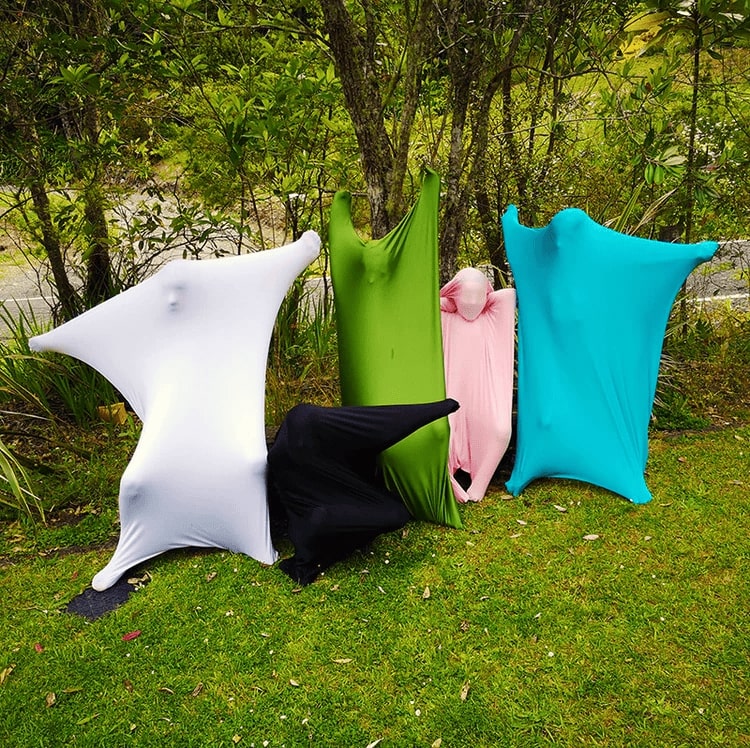
For a visual demonstration of sensory body socks in action, check out this YouTube video.
Conclusion
Sensory body socks offer endless opportunities for both structured therapy and creative play. They help children engage their senses, improve motor skills, and relax in a fun, safe environment. Whether used at home, in the classroom, or during therapy sessions, body socks provide unique benefits for children of all abilities.
Boiling Point: How to Talk to Primary School Children About Stress
Stress Head. Worrier. Nervous Wreck. These labels often get thrown around when children struggle with stress. But stress doesn't have to be a bad thing. In fact, with the right guidance, children can learn to use stress as a tool to build emotional resilience and handle challenges better as they grow.

Understanding Stress in Children
From schoolwork to friendships, children face many sources of stress. Each child is unique, and so are the reasons they might feel stressed. It's important to recognize that stress is a normal part of life. The key is helping children manage it in a healthy way.
Talking About Stress: Lead by Example
Sometimes, the best way to start a conversation is by sharing your own experiences. Letting your child see that everyone feels stressed from time to time can make it easier for them to open up. Remember, children often think they’re the only ones who feel a certain way, so showing vulnerability can be reassuring.
Listening is Key
You don’t always need to have all the answers. Often, children just need someone to listen. Let them talk through their feelings without fear of judgment. This can help them make sense of their emotions and find their own solutions.
Activities to Ease Stress
If talking doesn’t seem to help, physical activity can be a great alternative. Exercise, whether it’s a walk in the park or a game of football, can help children process their emotions and reduce stress. Physical activities are known to boost mental health, providing a break that allows for a fresh perspective.
Tech Tools for Stress Relief
In today’s digital age, mobile apps can be a valuable resource for managing stress. Apps like Breathe2Relax, Calm, and Headspace offer tools for relaxation and mindfulness, which can be especially helpful for children who might not feel ready to talk about their stress.

Final Thoughts
Helping children understand and manage stress is essential for their emotional development. With the right support, they can learn to navigate challenges with confidence and resilience.
#ChildStressManagement #PrimarySchoolKids #MentalHealthForKids #EmotionalResilience #MindfulnessForChildren #HealthyKids #StressReliefForKids #ParentingTips
How to Enhance Your Child's Motor Skills with Outdoor Activities This Summer
This summer is the perfect time for kids to engage in outdoor activities that help develop their motor skills. As parents, it's important to choose the right activities, ensure safety, and provide healthy snacks to keep the energy levels high. Here's a comprehensive guide to making the most out of summer outdoor play, with tips on activities, snacks, and safety equipment.
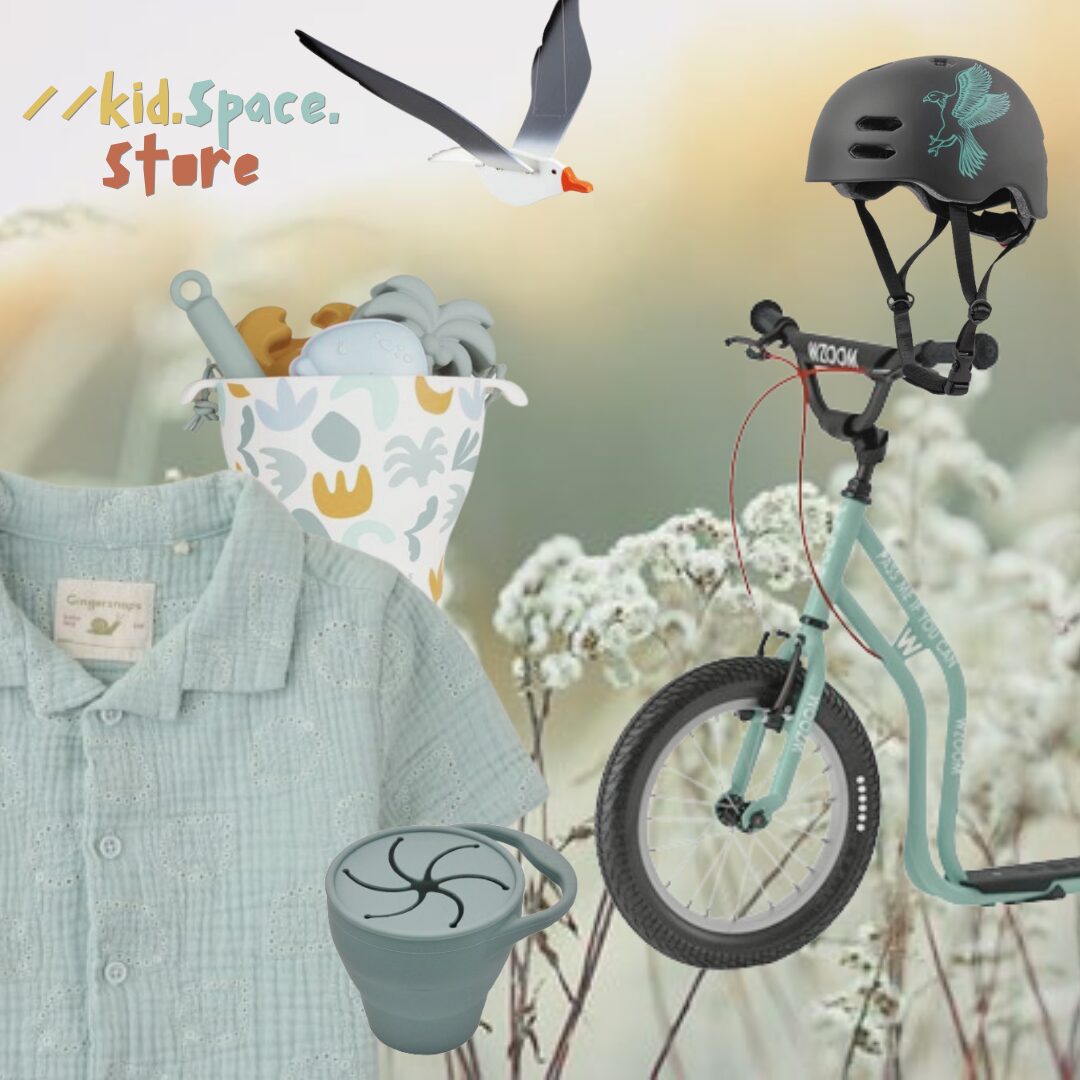
Activities to Enhance Motor Skills
1. Balance Bike Riding Balance bikes, like the one featured from KidSpace Store, are excellent for improving balance and coordination. They help kids develop the necessary motor skills for cycling without the need for training wheels. Encourage your child to ride on different terrains to enhance their adaptability and motor control.
2. Sand Play Sand toys, like the ones shown in the image, offer endless possibilities for creativity and fine motor skill development. Digging, pouring, and building sandcastles require precision and coordination, making it a fun and educational activity.
3. Outdoor Sports Simple outdoor sports such as soccer, catch, or frisbee are great for gross motor skills. These activities involve running, jumping, and hand-eye coordination, essential for overall physical development.
4. Nature Hikes and Walks Taking nature hikes or walks helps children develop their gross motor skills through climbing, walking on uneven surfaces, and exploring. It’s also a fantastic way to instill a love for nature and physical activity.
Don't forget about delicious, healthy snacks!
While engaging in these activities, it's crucial to keep your child energized and hydrated. Healthy snacks provide the necessary nutrients and energy to keep them active and focused. Here are some healthy snack ideas:
- Fresh Fruit: Easy to pack and full of vitamins.
- Nut Butter Sandwiches: A great source of protein and healthy fats.
- Vegetable Sticks with Hummus: Perfect for a quick and nutritious snack.
- Trail Mix: A combination of nuts, seeds, and dried fruits for sustained energy.

Safety and Quality Considerations
Ensuring your child's safety during outdoor activities is paramount. Here are some tips to keep in mind:
1. Safety Gear Always equip your child with the necessary safety gear. Helmets, like the stylish one featured from KidSpace Store, are essential for activities like biking or scootering. Ensure that the helmet fits properly and is worn at all times during the activity.
2. Quality Equipment Choose high-quality equipment to ensure durability and safety. Products from trusted stores like KidSpace Store offer the reliability you need. Look for items that are designed for children and meet safety standards.
3. Supervision Always supervise your child during outdoor play. Even in seemingly safe environments, close supervision can prevent accidents and ensure that your child is using equipment correctly.
4. Hydration Keep your child hydrated, especially during hot summer days. Encourage regular water breaks to prevent dehydration and maintain energy levels.
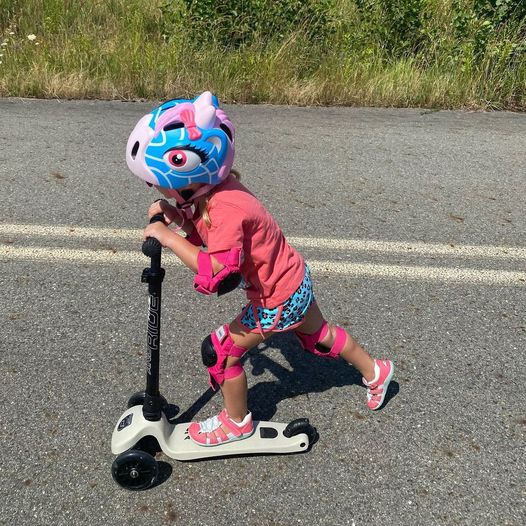
Conclusion
Outdoor activities are a fantastic way to develop your child's motor skills during the summer. By incorporating balance bikes, sand play, outdoor sports, and nature walks, you can create a fun and educational environment. Remember to provide healthy snacks, ensure safety with the right gear, and choose quality equipment to make the most out of your child's outdoor playtime.
Visit KidSpace Store to find high-quality outdoor gear and toys that will support your child's development and ensure a safe, fun summer.
You can see more of the products shown in the pictures here:
Scooters, Balance Bikes & Helmets
Launch Boxes & Snack Cups
Beach Sand Play Sets
Air-permeable, "breathable" clothes
How to Adapt Your Communication and Reactions Based on Children's Active Brain Structure
Parenting can be challenging, especially when it comes to communicating effectively with children whose brains are still developing. Understanding how to adapt your communication and reactions to suit your child's active brain structure can make a significant difference in their behavior and development. Here, we’ll explore practical strategies and real-life examples to help you navigate this process.
The Power of Positive Visualization
The first thing that comes to mind when you hear, “Don’t jump on the bed!” is likely an image of a child jumping on the bed. This happens because our brains often focus on the action described, ignoring the negative prefix. Therefore, when we want children to stop doing something, we need to create a positive visual image in their minds.

Example: Anna and Leo
Anna often found her son, Leo, jumping on the bed. Instead of saying, “Don’t jump on the bed,” Anna started saying, “Jump on the floor. The bed is for sleeping.” This helped Leo visualize the correct behavior, and soon he started jumping on the floor instead of the bed.
Similarly, if your child is drawing on the table, instead of saying, “Don’t draw on the table,” you could say, “Draw on the paper.” Providing a clear, positive instruction can guide children toward the desired behavior.
Avoid Planting Negative Ideas
Sometimes, parents inadvertently introduce fears or negative thoughts to their children. For instance, saying, “The doctor won’t hurt you,” might make a child anxious about potential pain. Instead, focus on positive or neutral statements.
Example: Emily and Ben
Emily told her son, Ben, before a doctor's appointment, “We’re going to see the doctor to make sure you’re healthy.” Ben, who had no previous fear of doctors, remained calm and cooperative. Compare this to saying, “The doctor won’t do anything scary,” which could introduce unnecessary anxiety.
Giving Clear Instructions Without Implied Choices
In some situations, children have no choice, such as bedtime or attending daycare. Offering these as questions can create confusion and resistance.
Example: Maria and Sophie
Maria used to ask her daughter, Sophie, “Do you want to go to bed?” and Sophie would often say “no.” Maria learned to use clear, decisive language instead: “It’s time to go to bed.” This eliminated the implied choice and reduced bedtime battles.
Preparing Children for Transitions
Sudden transitions can be jarring for children, especially when they are deeply engaged in an activity. Preparing them for changes in advance can make transitions smoother.
Example: David and Mia
David noticed his daughter, Mia, would get upset when it was time to stop playing and come to dinner. He started giving her a five-minute warning: “Mia, dinner will be ready in five minutes. Please finish what you’re doing.” This heads-up helped Mia transition more smoothly from playtime to mealtime.

Offering Controlled Choices
When you do want to give children a sense of control, offer choices between two acceptable options. This makes them feel empowered while still guiding them toward desired behaviors.
Example: Olivia and Max
Olivia asked her son, Max, “Do you want to put away your toys before or after dinner?” Max chose to do it before dinner, feeling proud of making his own decision. This technique works well because it gives children autonomy while ensuring that necessary tasks are completed.
Using Affirmative Statements
Reframe negative statements into affirmative ones to encourage desired behaviors.
Example: Lucas and Emma
Instead of saying, “Don’t leave your crayons on the floor,” Lucas told his daughter, Emma, “Crayons go back in the box when you’re done.” This clear, positive instruction helped Emma remember where the crayons belonged.
Addressing Unintended Destruction Positively
When children make mistakes, describe the action and its consequence rather than labeling the child negatively.
Example: James and Lily
James’s daughter, Lily, accidentally broke a vase while trying to help arrange flowers. Instead of scolding her, James said, “I see you wanted to help. Let’s clean up the broken vase and find a new one together.” This approach acknowledged Lily’s good intention and involved her in solving the problem.

Managing Your Reactions
If a child’s behavior is bothering you, address it calmly before frustration builds up.
Example: Karen and Sam
Karen noticed her son, Sam, repeatedly clicking his pen. Instead of letting it irritate her until she snapped, she calmly said, “Sam, the clicking noise is distracting. Can you use the pen quietly, please?” Sam, unaware that the noise was bothersome, stopped immediately.
Creating a Nurturing Environment
It's crucial to create an environment where children feel comfortable and can independently engage in creative activities. Parents should step in only when necessary, allowing children to explore and learn at their own pace. This concept aligns with the ideas shared in our previous blog post, "Secrets to Boosting Your Child's Independence and Creativity: A Parent's Guide".

Conclusion
Adapting your communication to align with your child's developing brain structure is crucial for effective parenting. By creating positive visual images, avoiding negative suggestions, giving clear instructions, preparing children for transitions, offering controlled choices, using affirmative statements, addressing unintended destruction positively, and managing your reactions calmly, you can foster a supportive and nurturing environment for your child’s growth.
Remember, the goal is to guide and support your children, helping them to feel comfortable and confident in their abilities. This balanced approach not only aids in their development but also strengthens your relationship with them. For more insights on fostering independence and creativity in your child, check out our previous blog post here.
Activities for Toddlers as Summer Turns: Mud Kitchens - Inspiring Creativity and Development in Children
Outdoor play is crucial for children's development, offering endless opportunities for creative and imaginative experiences. Among the many outdoor play options, mud kitchens stand out as an exceptional tool for fostering creativity, exploration, and learning. Here's why mud kitchens are a must-have for every child and what makes them so beneficial.
 Photo: SMALL FOOT
Photo: SMALL FOOT
The Magic of Mud Kitchens
Imagination Unleashed: Mud kitchens provide a blank canvas for children to create their culinary masterpieces using natural materials like sand, gravel, bark, and leaves. This open-ended play encourages kids to use their imagination, turning simple twigs and stones into gourmet ingredients. The versatility of these natural elements means there are no set rules—children can invent and explore endlessly.
Hands-On Learning: Playing with mud kitchens involves sensory play, which is vital for young children. The textures of sand, mud, and water help develop fine motor skills and hand-eye coordination. As children mix, pour, and shape these materials, they engage in activities that enhance their physical and cognitive development.
Benefits of Mud Kitchens
Social Skills Development: Mud kitchens are perfect for role-playing, allowing children to mimic everyday activities they observe in their surroundings. This kind of play helps them understand and internalize social norms and behaviors. When playing with friends, children learn to cooperate, share, and communicate effectively, building essential social skills.
 Photo: SMALL FOOT
Photo: SMALL FOOT
Creativity and Problem-Solving: With no fixed rules, mud kitchens encourage creative thinking and problem-solving. Children experiment with different combinations of natural materials to create their "recipes," fostering innovative thinking. This type of play promotes cognitive flexibility and the ability to think outside the box.
Environmental Awareness: Spending time outdoors with mud kitchens helps children develop a connection with nature. They learn to appreciate the environment and understand the importance of sustainability by using natural materials in their play. This early exposure to environmental concepts can instill a lifelong respect for nature.
What Makes a Great Mud Kitchen?
Flexibility and Versatility: A good mud kitchen should be multifunctional, providing various play opportunities. It can serve as a planting table for young gardeners or a workspace for budding scientists. Ample storage and workspace are essential so multiple children can play simultaneously.
Durability and Mobility: Mud kitchens should be made from weather-resistant materials to withstand outdoor conditions. They should also be easy to move, allowing for repositioning in the garden as needed. Features like robust wheels and sturdy construction are key for ensuring long-term use.
Design and Customization: A mud kitchen made from untreated, solid wood offers a blank slate for customization. Children (or their parents) can paint and decorate the kitchen, adding a personal touch that makes the play space truly unique. This DIY aspect not only enhances the aesthetic appeal but also adds another layer of creative involvement.
 Photo: SMALL FOOT
Photo: SMALL FOOT
Conclusion
Mud kitchens are more than just play structures—they are powerful tools for child development. They inspire creativity, promote social skills, and foster a love for the outdoors. By providing a versatile and engaging play environment, mud kitchens help children grow into imaginative, resourceful, and environmentally conscious individuals. So, let your child's culinary adventures begin with a mud kitchen, and watch as they explore, create, and learn in the most delightful ways.
How to Best Develop Motor Skills in the First 3 Years of Life
The first three years of a child's life are crucial for the development of motor skills. These foundational abilities are essential for physical development and influence a child's ability to interact with their environment. Here are some of the best strategies to support and enhance motor skill development during these formative years.
1. Encourage Tummy Time
Tummy time is essential for infants as it helps build strength in the neck, shoulders, arms, and back. This foundational exercise is crucial for developing the muscles needed for sitting, crawling, and eventually walking.
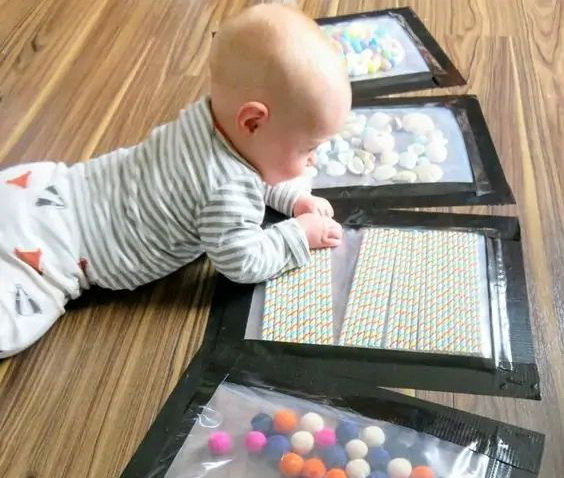 Photo & more: howweelearn
Photo & more: howweelearn
Tips for Tummy Time:
- Start with short sessions of 2-3 minutes, gradually increasing as your baby grows stronger.
- Engage with your baby by getting down to their level, making eye contact, and encouraging them with toys or sounds.
- Ensure the surface is safe and comfortable, such as a soft mat or blanket on the floor.
According to the American Academy of Pediatrics (AAP), tummy time helps prevent flat spots on the back of your baby’s head and promotes motor skills.
2. Provide a Variety of Textures and Objects
Introducing your baby to a variety of textures and objects helps stimulate their senses and develop fine motor skills. Different textures encourage babies to explore and use their fingers and hands in new ways.
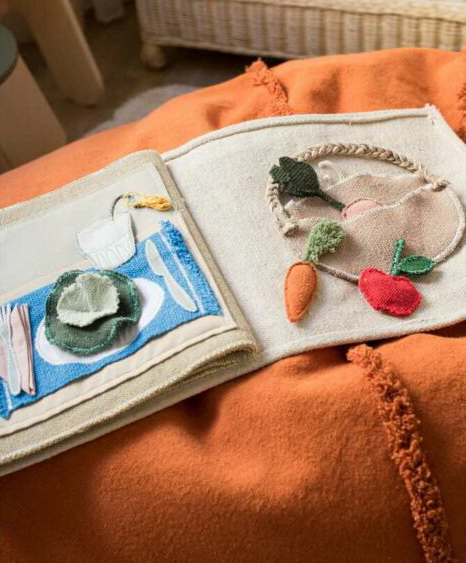 Book: Lorena Canals
Book: Lorena Canals
Activities with Textures:
- Use soft toys, textured books, and sensory balls.
- Let your child play with natural objects like leaves, pinecones, and smooth stones.
- Create a sensory bin filled with items like rice, beans, or sand for your child to explore.
Educational experts suggest that children who engage with natural materials are more likely to develop a deeper understanding of the world around them.
3. Learning Through Play: The Joy of Games and Activities
Children learn best when they are having fun. Play-based learning integrates educational content into games and activities, making the process enjoyable and effective. Research from the Harvard Graduate School of Education highlights that play-based learning can improve language, math, and social skills.
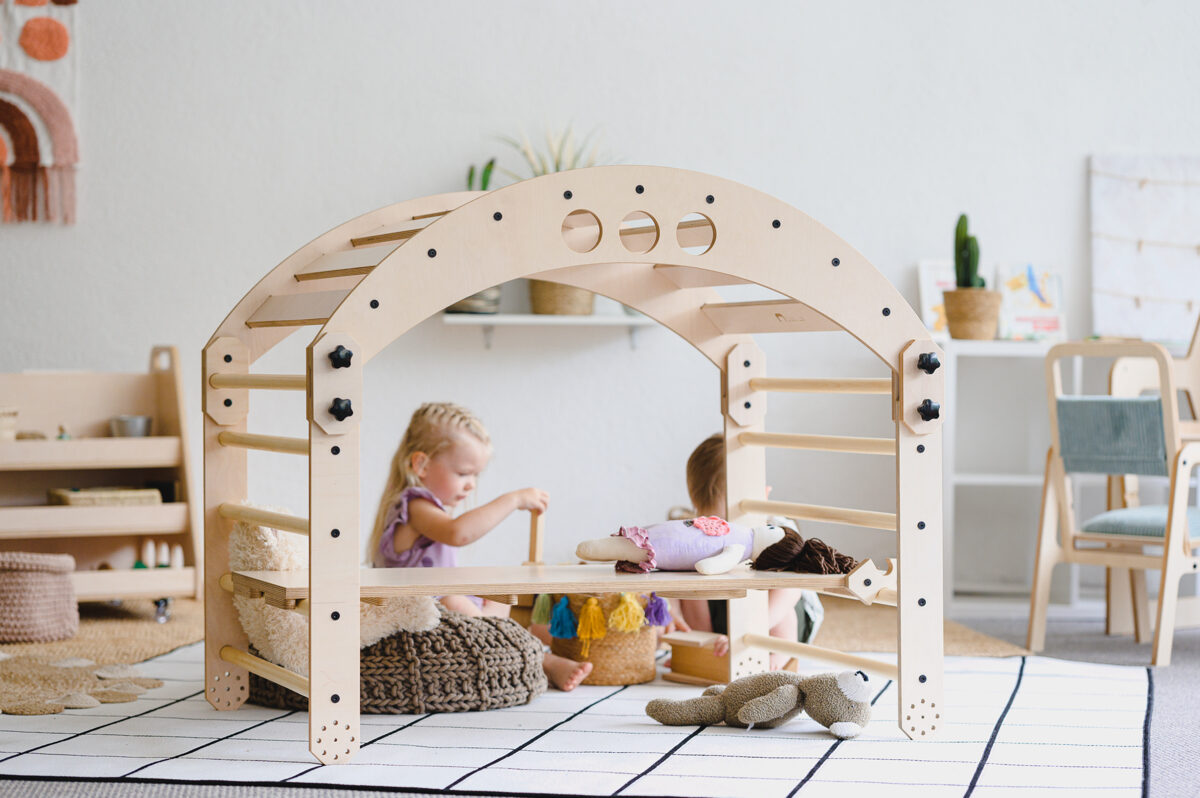 Climbing Set: Luula
Climbing Set: Luula
Examples of Play-Based Learning Activities:
- Building Blocks: Stacking and knocking down blocks helps develop hand-eye coordination.
- Play Dough: Squeezing, rolling, and molding play dough strengthens hand muscles.
- Ride-On Toys: Encourage balance and coordination with age-appropriate ride-on toys like the Baghera Speedster Silkgrey Ride-On.
4. Encourage Crawling and Movement
Crawling is a critical milestone in motor skill development. It helps improve coordination, balance, and strength. Create an environment that encourages your child to move and explore safely.
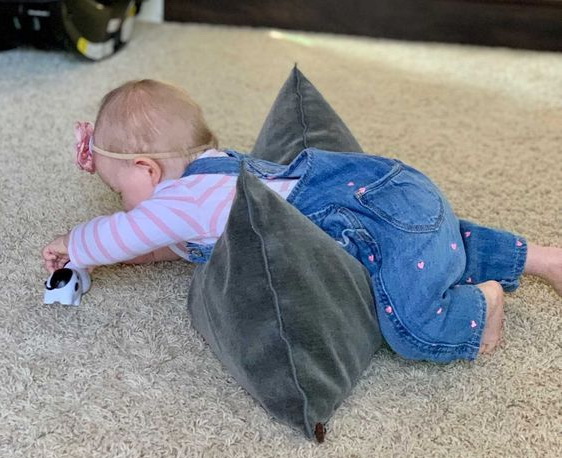
Photo& info more: mamabearu
Tips to Encourage Crawling:
- Place toys just out of reach to motivate your baby to crawl towards them.
- Use tunnels and soft obstacles to create a fun and challenging crawling course.
- Provide plenty of floor time in a safe and open space.
According to the Mayo Clinic, crawling is important as it promotes hand-eye coordination, spatial awareness, and muscle strength.
5. Incorporate Music and Dance
Music and dance are excellent ways to develop both gross and fine motor skills. Rhythmic movement to music helps children develop coordination and balance.
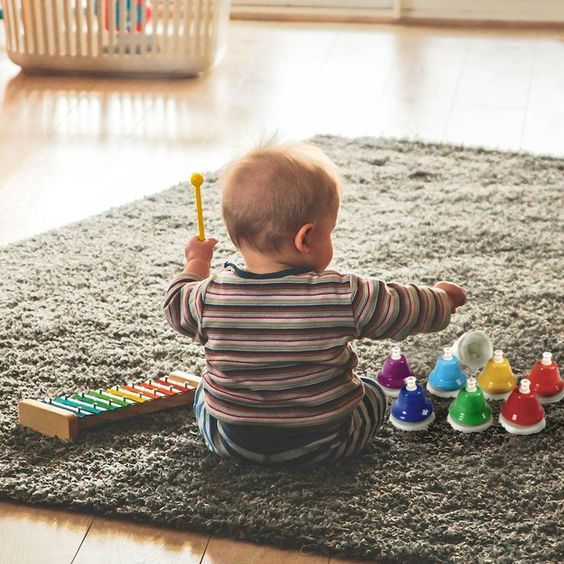
Musical Activities:
- Play different types of music and encourage your child to move to the beat.
- Use simple instruments like tambourines or maracas to develop hand-eye coordination.
- Engage in dancing games that involve actions like clapping, jumping, and spinning.
Studies show that music and movement activities support motor skill development and enhance cognitive abilities.
6. Engage in Outdoor Play
Outdoor play offers endless opportunities for motor skill development. Activities like running, climbing, and playing with balls help strengthen muscles and improve coordination.
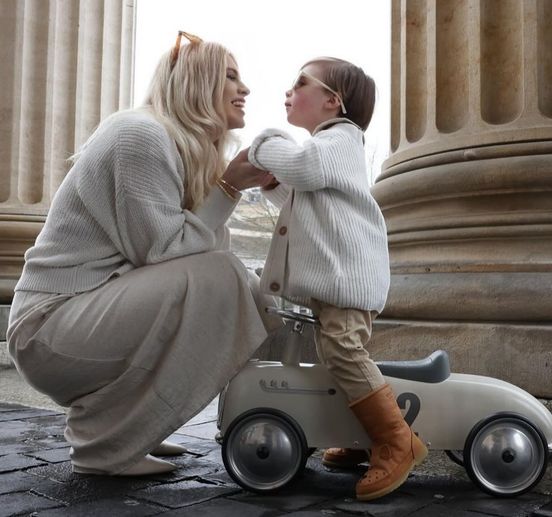
Auto: Baghera
Outdoor Play Ideas:
- Visit playgrounds where your child can climb, slide, and swing.
- Play ball games that involve throwing, catching, and kicking.
- Explore nature trails and encourage walking and running on different terrains.
According to the Child Mind Institute, outdoor play is vital for physical health and motor development.
7. Storytelling and Social Play
Storytelling and social play can also contribute to motor skill development by integrating movements and actions into the narrative. This method not only makes learning fun but also enhances cognitive and motor skills.
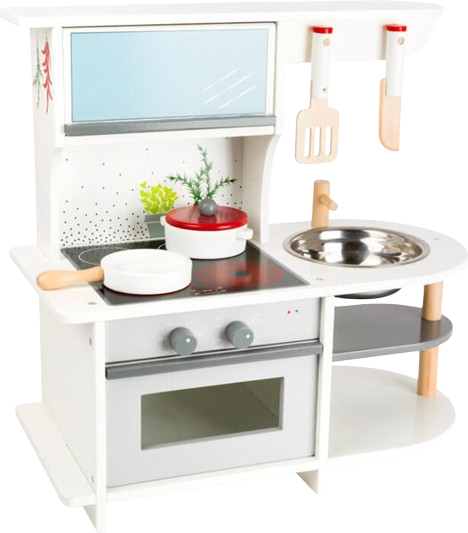
Baby Kitchen: Small Foot
Social Play Activities:
- Use action songs and nursery rhymes that involve hand movements and gestures.
- Role-playing games where children act out different scenarios and use various props.
- Encourage group play with other children to develop social and cooperative skills.
For more ideas on making learning fun for young children, including engaging educational activities, check out our detailed guide here: Making Learning Fun for Young Children: Engaging Educational Activities for Early Development.
Conclusion
Developing motor skills in the first three years of life is crucial for a child's overall development. By incorporating these activities and strategies into your daily routine, you can create a stimulating and supportive environment that encourages your child to explore, learn, and grow. Remember, the key is to make learning fun and engaging, turning every moment into an opportunity for development.
References:
- American Academy of Pediatrics (AAP). "Tummy Time: How to Help Your Baby Get Comfortable on Their Belly." AAP.
- Harvard Graduate School of Education. "The Benefits of Play-Based Learning." Harvard.
- Mayo Clinic. "Infant Development: Milestones from 1 to 12 months." Mayo Clinic.
- Child Mind Institute. "The Benefits of Outdoor Play for Kids." Child Mind Institute.
- National Association for the Education of Young Children (NAEYC). "Sand Play: Learning Through Exploring." NAEYC.
Unleashing Creativity: Nurturing Independent Thinking in Children
In the fast-paced world of today, fostering a child's ability to think beyond boundaries and develop creativity is an essential process. Encouraging them to explore outside the confines of conventional thinking not only nurtures innovation but also cultivates critical thinking skills. Here are some ideas and tips to create an environment that promotes independence and a natural curiosity in children:
1. Create a Curiosity-Friendly Space: Set up a designated area in your home where your child can freely explore their interests. This space could include a variety of materials and resources, such as art supplies, books, puzzles, and scientific instruments, depending on their specific interests.

 3. Encourage Questioning: Create an atmosphere where
questions are not just welcomed but celebrated. When your child asks a
question, take the time to explore the answer together. This not only satisfies
their curiosity but also shows them that asking questions is a valuable part of
the learning process.
3. Encourage Questioning: Create an atmosphere where
questions are not just welcomed but celebrated. When your child asks a
question, take the time to explore the answer together. This not only satisfies
their curiosity but also shows them that asking questions is a valuable part of
the learning process.

4. Support Hands-On Exploration: Engage your child in hands-on activities that promote exploration. Whether it's a simple science experiment, gardening, or DIY projects, hands-on experiences allow them to discover and learn through trial and error.

5. Provide a Rich Learning Environment: Offer a
diverse range of experiences to enrich their learning. Visit museums, attend
cultural events, or explore nature together. Exposure to various environments
sparks new interests and broadens their understanding of the world.

6. Foster a Growth Mindset: Encourage a growth
mindset by praising effort and persistence rather than just innate abilities.
This mindset promotes resilience, the willingness to take on challenges, and a
belief in continuous improvement.

7. Celebrate Creativity in Various Forms: Recognize and celebrate creativity, whether it's through drawing, storytelling, music, or problem-solving. Display their creations proudly, fostering a sense of accomplishment and motivation to continue exploring their interests.

8. Emphasize the Journey, Not Just the Outcome: Place importance on the process rather than just the end result. Celebrate the learning journey, mistakes, and discoveries. This mindset helps children appreciate the value of learning and growing over time.

By incorporating these ideas into your parenting approach, you can create an environment that empowers your child to think independently, explore their interests freely, and cultivate a lifelong love for learning. Remember, each child is unique, so tailor these suggestions to suit their individual needs and preferences.









